In the whirlwind world of news, getting it right should be the gold standard, but sometimes, the rush to break a story leads to major facepalms. Here are 21 epic fails where the media missed the mark and left us scratching our heads.
The Martian Invasion Panic
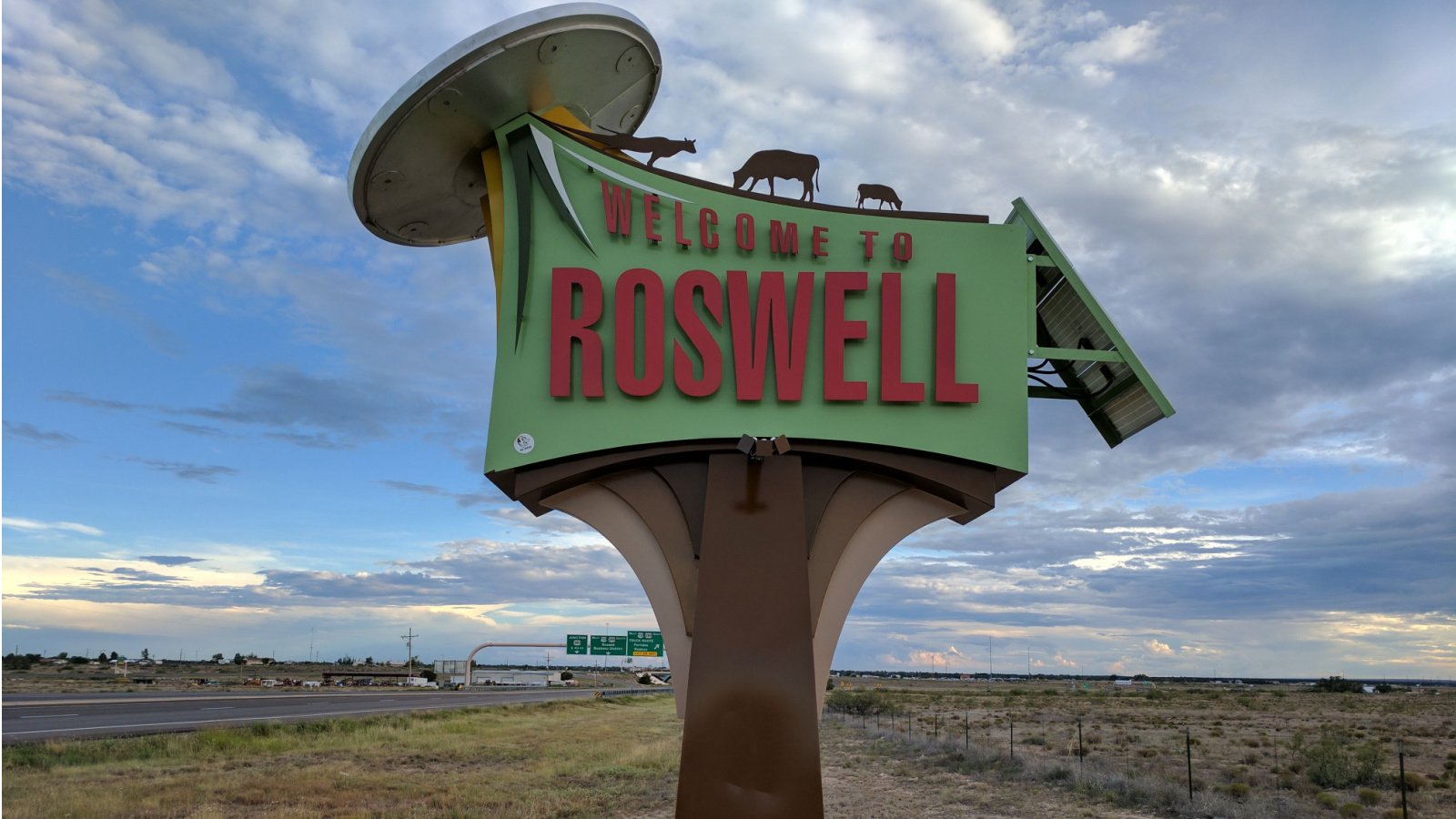
In 1938, a radio dramatization of H.G. Wells’ The War of the Worlds was mistaken for a real news broadcast, leading millions to believe that Earth was under attack by Martians. The mix-up was due to the realistic style of the broadcast, complete with fake news bulletins. The next day, newspapers reported on the widespread panic, although historical research suggests the actual panic was less widespread than reported. This event is a classic example of the media’s potential to inadvertently mislead the public.
Dewey Defeats Truman
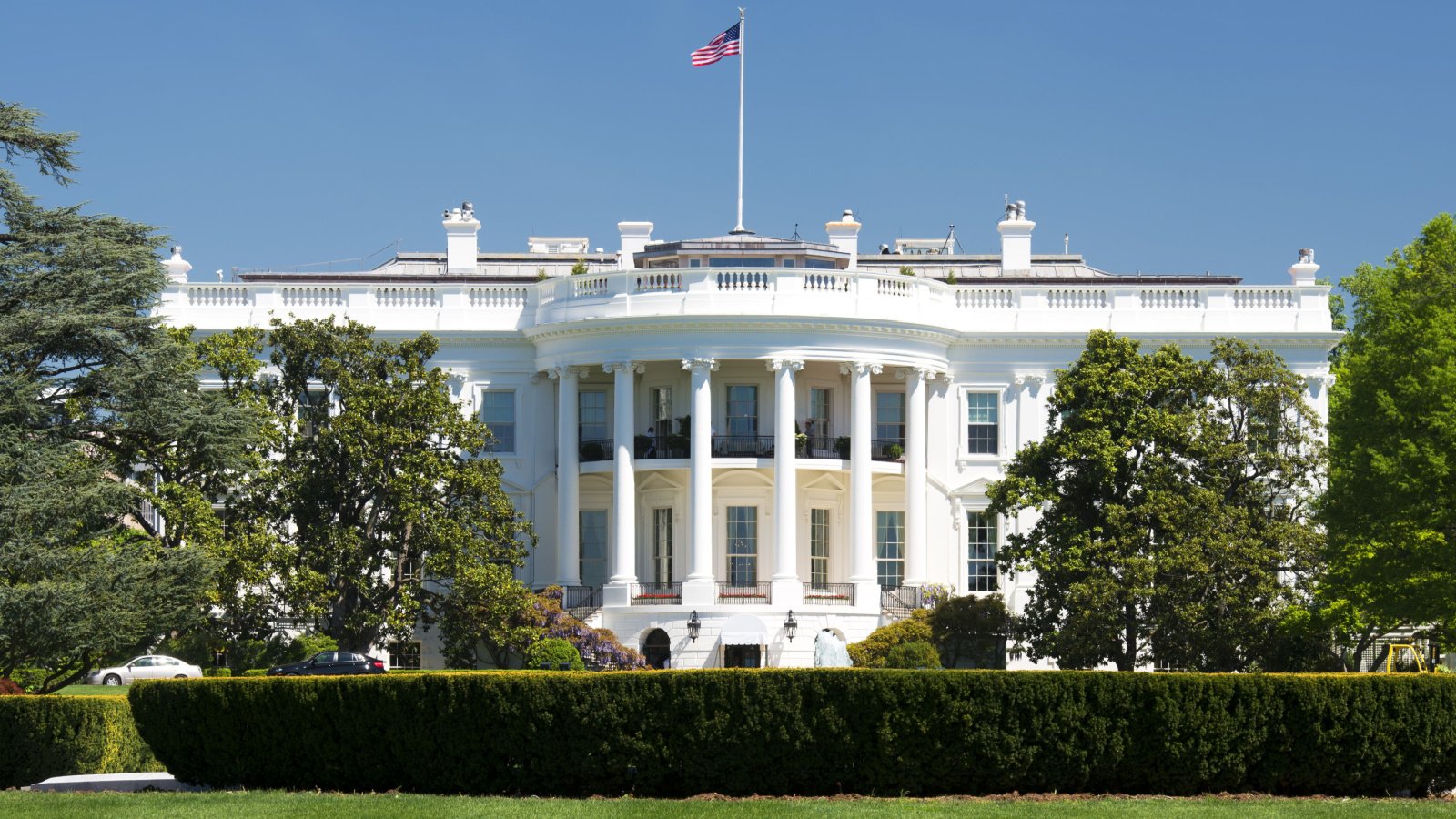
The 1948 presidential election delivered one of the most infamous headlines in journalism history: “Dewey Defeats Truman.” The Chicago Tribune, going to press before the final votes were tallied, made an incorrect assumption. The iconic image of Truman holding up the erroneous headline underscores the pitfalls of premature reporting. This serves as a cautionary tale about the importance of accuracy over speed in news reporting.
The Great Moon Hoax

In 1835, The New York Sun published articles about the discovery of life on the moon, attributed to astronomer Sir John Herschel. The series described fantastical creatures and civilizations, captivating readers. It was later revealed to be a hoax intended as satire. This early example of fake news highlights the media’s power in shaping beliefs, even with outlandish claims.
The Balloon Boy Hoax

In 2009, the world was gripped by the story of a young boy thought to be adrift in a homemade helium balloon. As the drama unfolded live on television, it was later revealed that the boy was hiding in his attic the whole time. The incident was a publicity stunt gone wrong, orchestrated by the boy’s parents. This event demonstrates the media’s role in amplifying personal stories into major news, sometimes without full verification.
The MMR Vaccine Controversy

A 1998 study published in The Lancet suggested a link between the MMR vaccine and autism, sparking a health scare. Subsequent investigations found the research to be fundamentally flawed and based on manipulated data. The paper was retracted, and the author lost his medical license, but the damage was done. This case illustrates the consequences of reporting on scientific studies without sufficient scrutiny.
The Sinking of the Maine

In 1898, the explosion of the USS Maine in Havana Harbor was quickly attributed to Spanish sabotage by sensationalist newspapers, fueling the onset of the Spanish-American War. Later investigations suggested the explosion was accidental. The rallying cry “Remember the Maine!” exemplifies how media can stoke nationalistic fervor based on unfounded claims. This episode is a stark reminder of the media’s impact on international relations.
Watergate Revisited
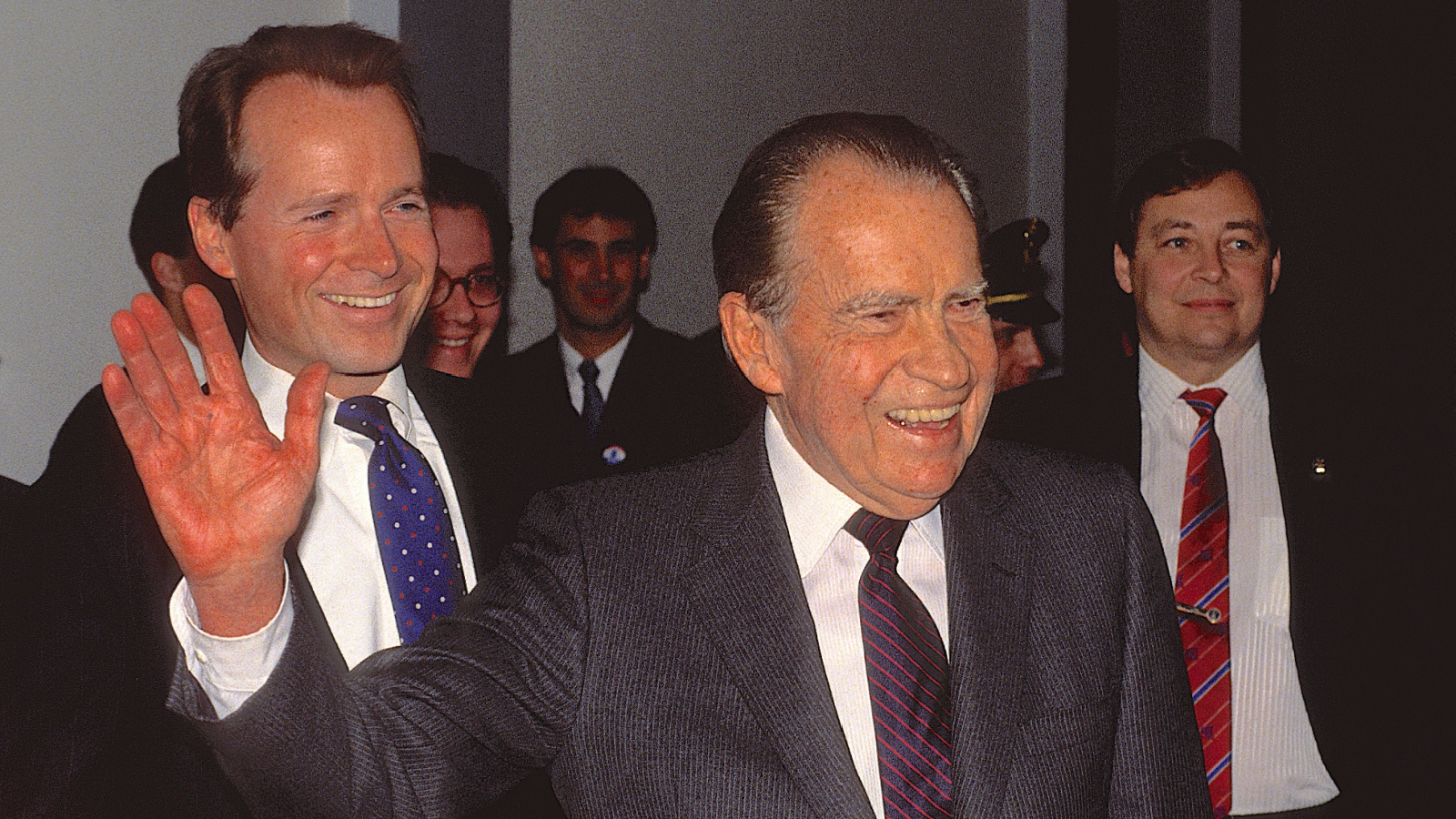
While the Watergate scandal is often hailed as a pinnacle of investigative journalism, subsequent analysis suggests that early reporting contained significant errors and oversimplifications. The complex web of political espionage was initially presented in a manner that sometimes bordered on speculative. Over time, as the truth unfolded, the narrative became more nuanced and accurate. This evolution in reporting underscores the dynamic nature of investigative journalism and its initial vulnerability to inaccuracies.
Gulf War Syndrome
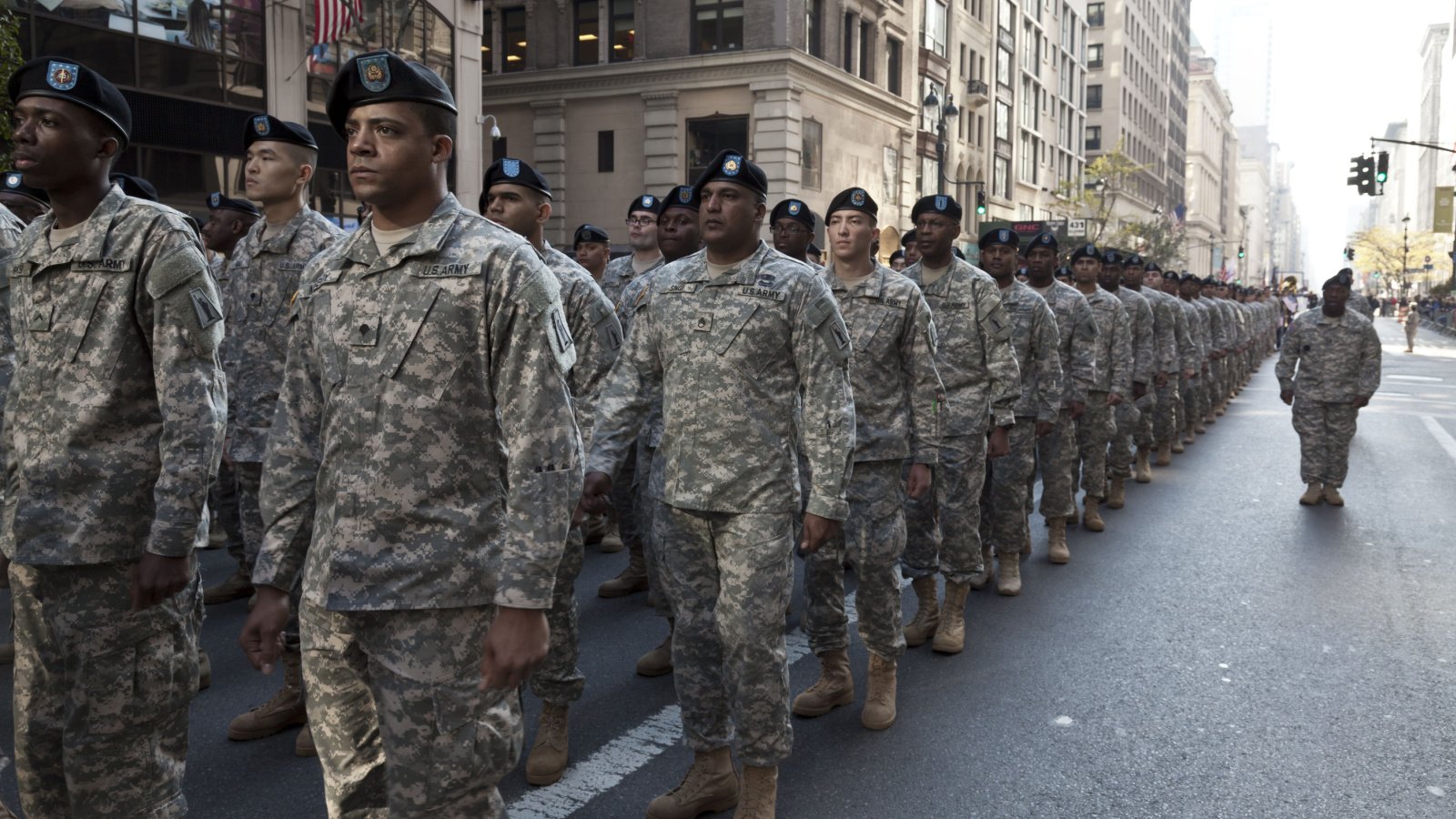
Following the Gulf War, reports emerged of veterans suffering from a mysterious set of symptoms dubbed “Gulf War Syndrome.” Early media coverage was skeptical, attributing the condition to psychological stress or even suggesting it was fabricated. However, further research validated the veterans’ experiences, linking the symptoms to exposure to chemical agents. This narrative shift highlights the media’s initial skepticism towards emerging health crises and the need for thorough investigation.
The Boston Marathon Bombing Misidentification

In the chaotic aftermath of the 2013 Boston Marathon bombing, several media outlets incorrectly identified suspects based on speculative evidence. This rush to judgment led to the widespread dissemination of innocent individuals’ images, causing them undue harassment. The incident illustrates the dangers of speculative reporting in the age of social media, where misinformation can spread rapidly. It serves as a cautionary example of the need for responsible journalism.
The Satanic Panic

In the 1980s and early 1990s, a moral panic swept through the United States, fueled by reports of satanic ritual abuse in daycare centers. Media coverage often presented these allegations as fact despite a lack of credible evidence. This led to wrongful convictions and a widespread cultural fear of satanic cults. The phenomenon demonstrates how media can amplify and legitimize baseless fears.
The Stock Market Crash of 1929

In the lead-up to the Wall Street crash of 1929, newspapers and magazines painted an overly optimistic picture of the stock market, encouraging the public to invest their life savings. When the market collapsed, millions were left financially ruined, questioning the media’s role in the speculative frenzy. The event underscores the media’s influence on economic perceptions and the dire consequences of misleading financial advice.
The Loch Ness Monster

Since the 1930s, the media has been captivated by the legend of the Loch Ness Monster, with numerous reports of sightings and photographs. While many of these have been debunked as hoaxes or misidentifications, the allure of Nessie persists. This enduring myth showcases the media’s fascination with the unexplained and its role in perpetuating folklore.
The Y2K Bug

As the new millennium approached, reports of the Y2K bug suggested that computer systems worldwide would fail, potentially leading to catastrophic consequences. The media’s coverage of the potential disaster led to widespread panic and significant financial expenditure to mitigate an event that ultimately had minimal impact.
The Weapons of Mass Destruction in Iraq
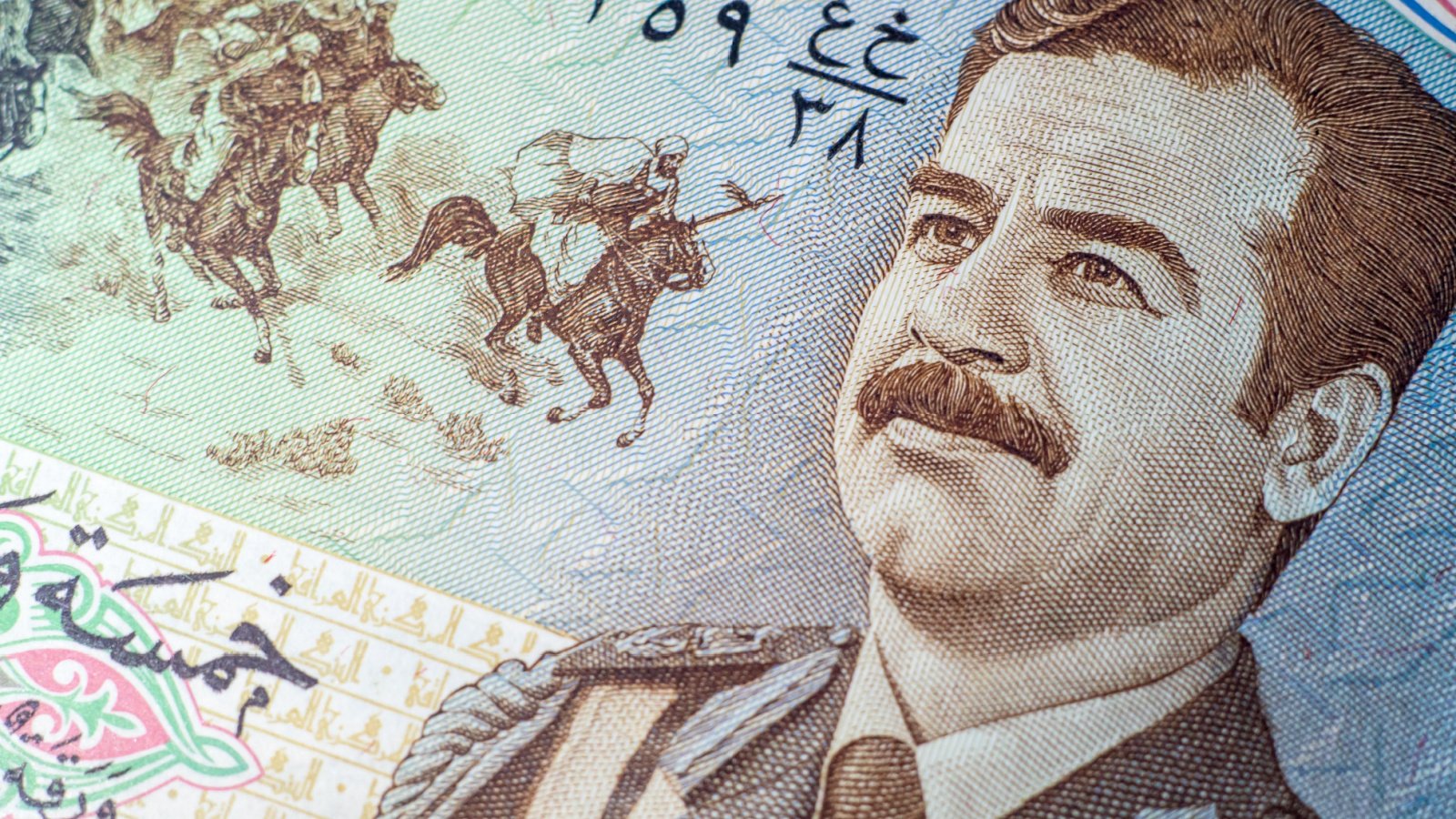
In the lead-up to the Iraq War, numerous media outlets reported on the presence of weapons of mass destruction (WMDs) in Iraq based on flawed intelligence. The failure to find such weapons post-invasion led to significant scrutiny of the media’s role in uncritically amplifying government claims. This incident underscores the importance of journalistic skepticism and the need for media to independently verify information.
The Celebrity Death Hoax Phenomenon

With the rise of social media, fake news about celebrity deaths has become a recurring phenomenon, often causing confusion and distress. These hoaxes are quickly amplified by traditional media outlets eager to break the news, demonstrating the challenges of navigating truth in the digital age. This trend highlights the need for media to exercise caution and verify information before dissemination.
The Alar Apple Scare

In 1989, a 60 Minutes report suggested that the chemical Alar, used on apples, posed a significant cancer risk to consumers, particularly children. The ensuing public scare led to a dramatic drop in apple sales and the eventual removal of Alar from the market. Subsequent analysis, however, indicated that the risks were significantly overstated, illustrating the potential consequences of sensationalized health reporting.
The Love Canal Environmental Disaster

In the late 1970s, Love Canal, a neighborhood in Niagara Falls, New York, became synonymous with environmental catastrophe due to chemical waste contamination. Initial reports sensationalized the story, at times overshadowing the nuanced scientific and policy discussions necessary for understanding and addressing the issue. This case highlights the complexities of balancing sensationalism with accurate scientific reporting.
The AIDS Epidemic in the 1980s

Early in the AIDS crisis, media coverage was often sensationalized and stigmatizing, framing AIDS as a “gay plague” and contributing to widespread fear and discrimination. Over time, as understanding of the disease evolved, the narrative shifted towards compassion and awareness. This transformation in media portrayal underscores the evolving nature of health journalism and its impact on public perception and policy.
The Duke Lacrosse Case
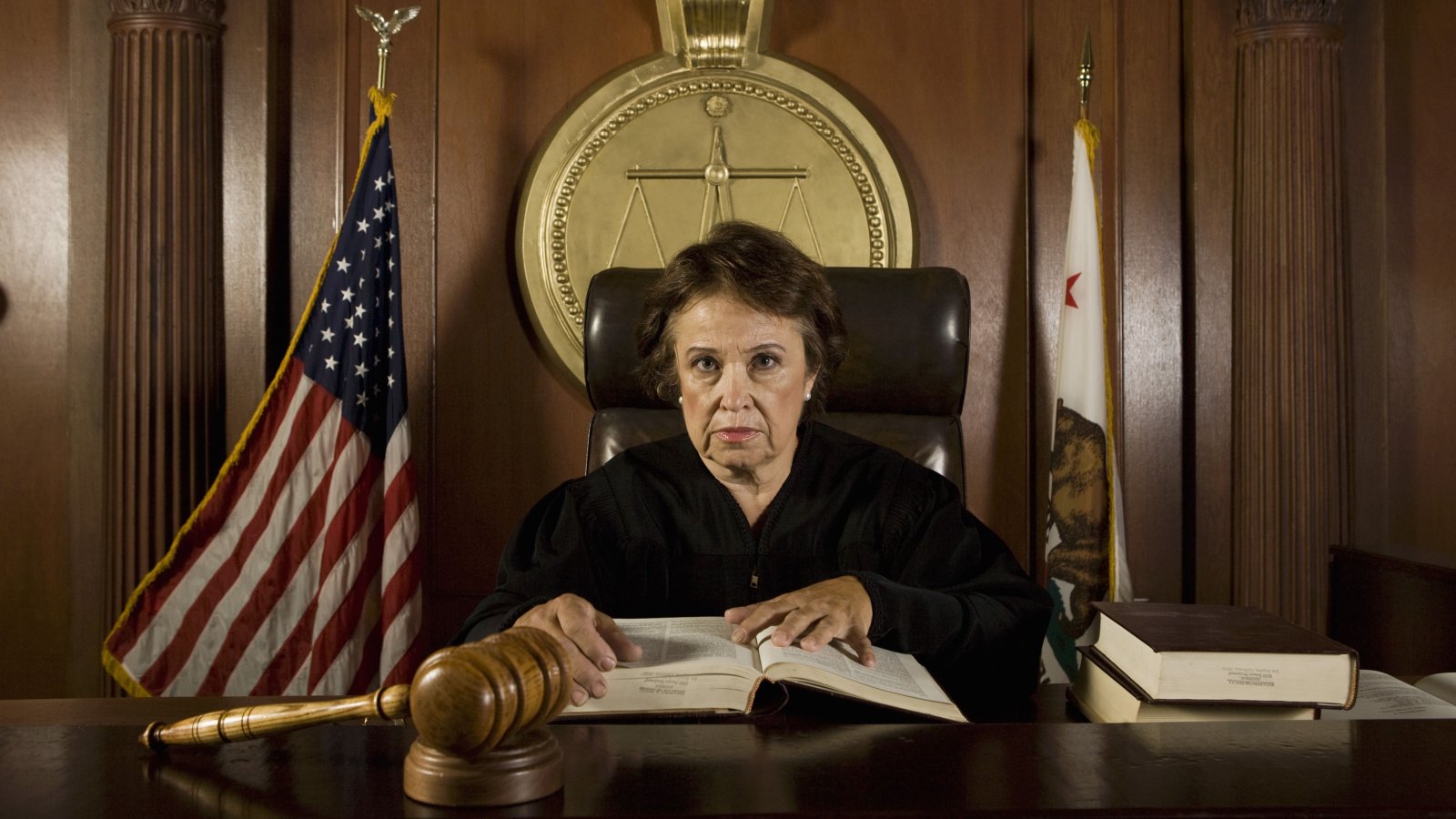
In 2006, members of the Duke University lacrosse team were falsely accused of rape, with media coverage often presuming their guilt before the facts were fully established. The subsequent exoneration of the accused highlighted issues of media bias and the rush to judgment. This case serves as a reminder of the media’s powerful role in shaping public opinion and the importance of maintaining objectivity and due process.
The Central Park Five

In 1989, five teenagers were wrongfully convicted of assaulting a jogger in Central Park, with media coverage at the time often racially charged and presumptive of their guilt. Their exoneration years later, through DNA evidence, shed light on the media’s role in perpetuating stereotypes and influencing the judicial process. This case emphasizes the need for the media to critically examine its biases and the potential consequences of prejudicial reporting.
The Cambridge Analytica Scandal

In 2018, reports emerged that data from millions of Facebook users had been improperly accessed by Cambridge Analytica to target voters in political campaigns. Initial media coverage focused on the sensational aspects of the scandal, often at the expense of deeper analysis of data privacy and the ethical use of personal information.



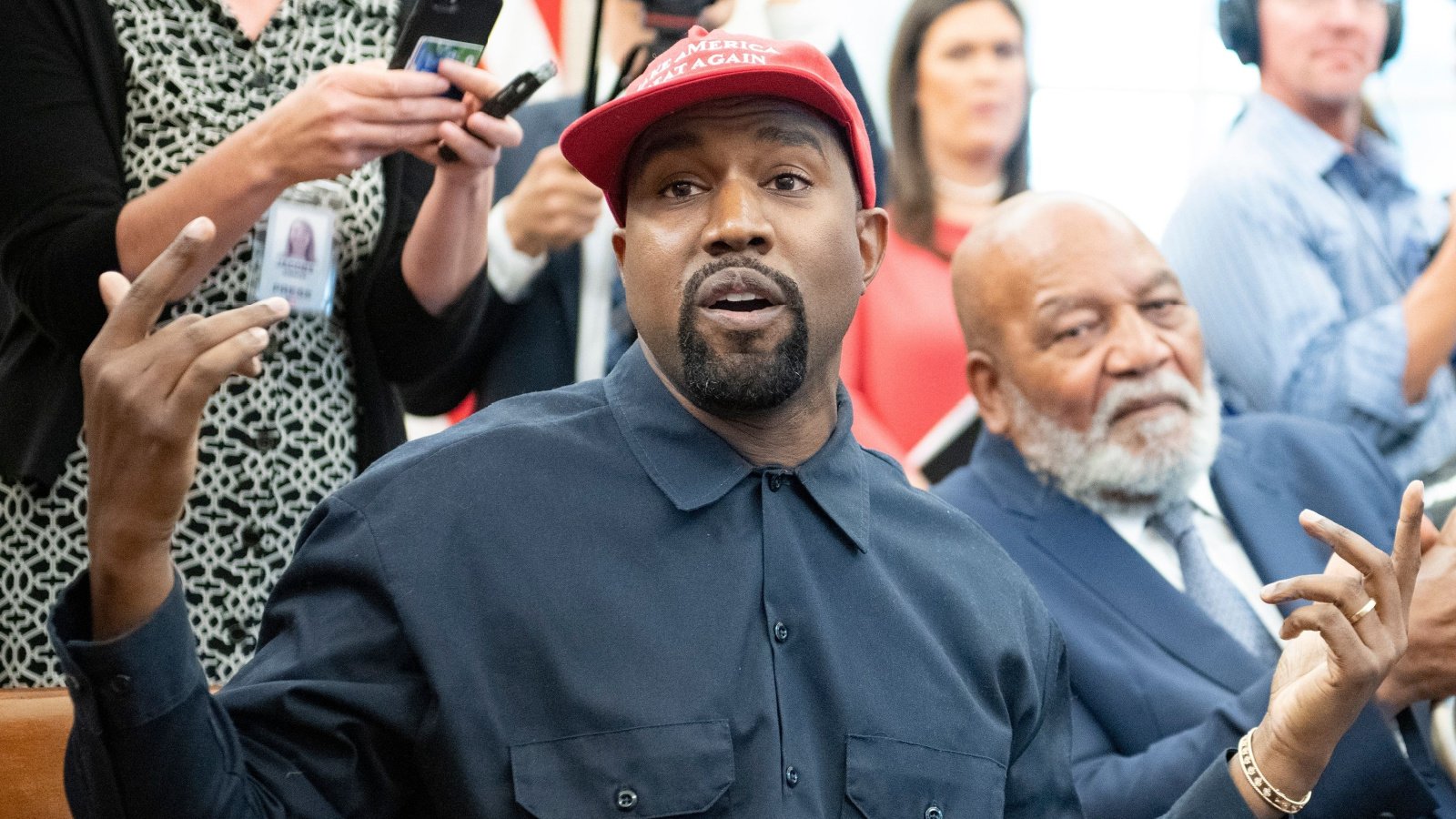
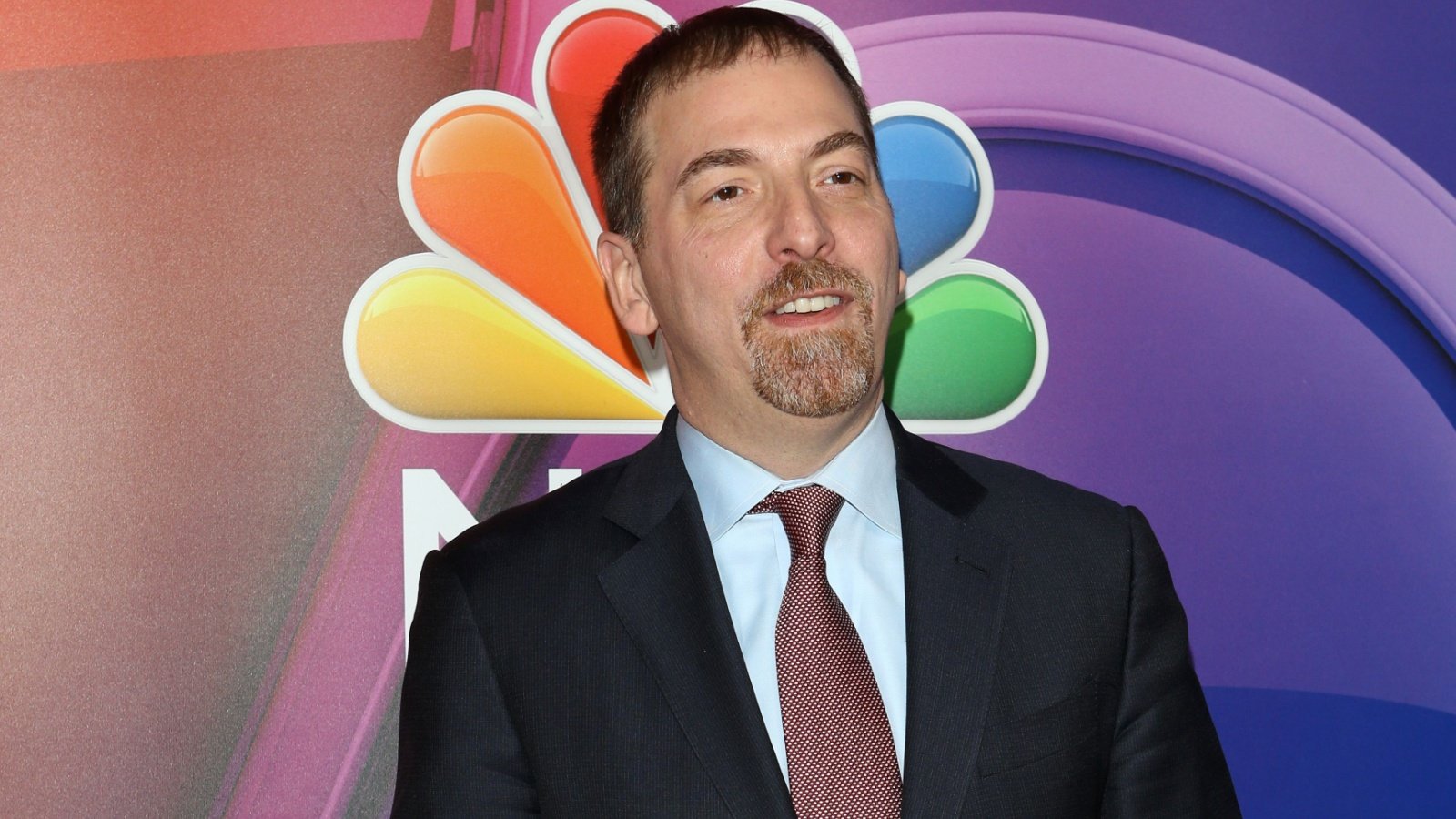

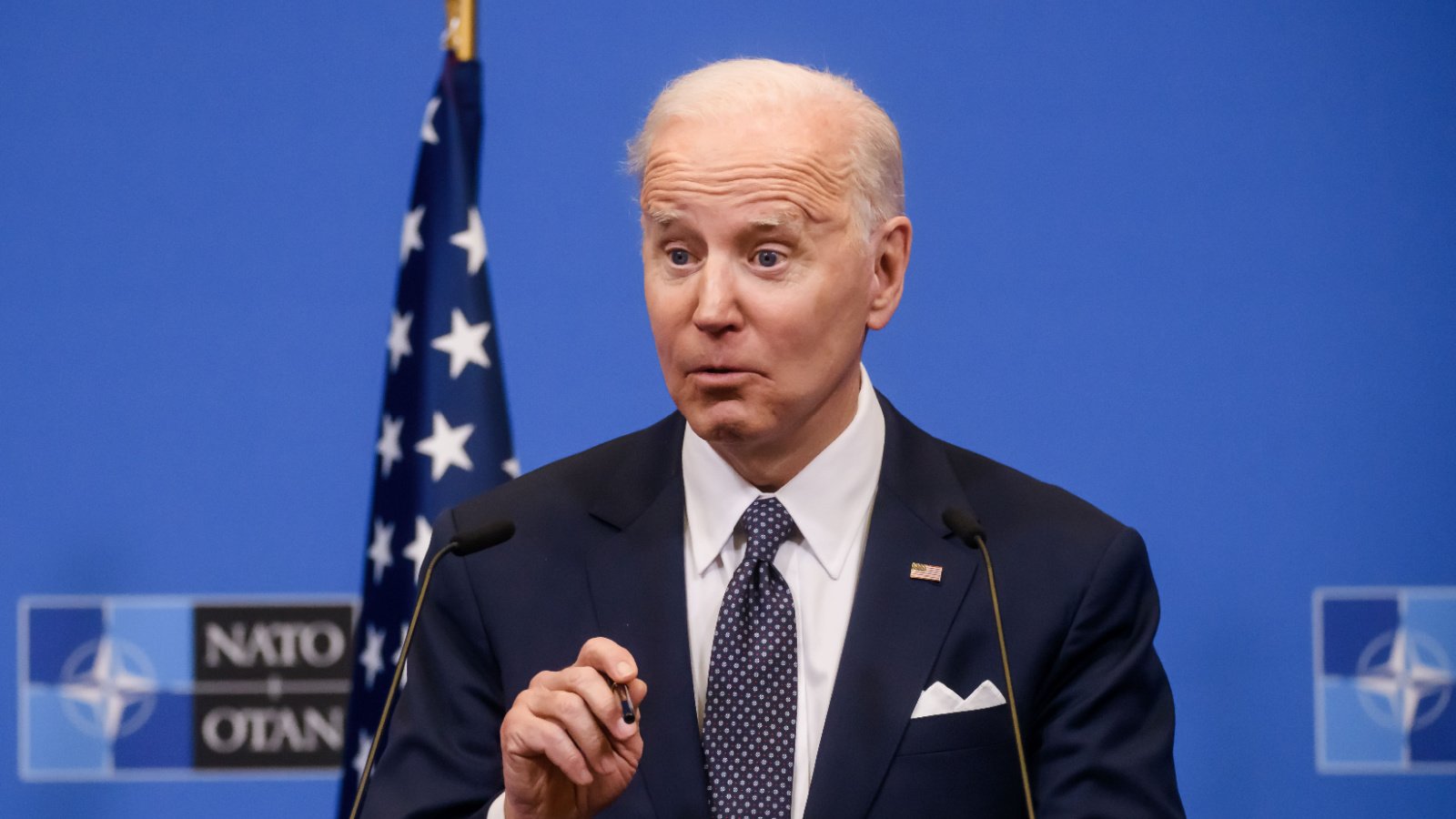
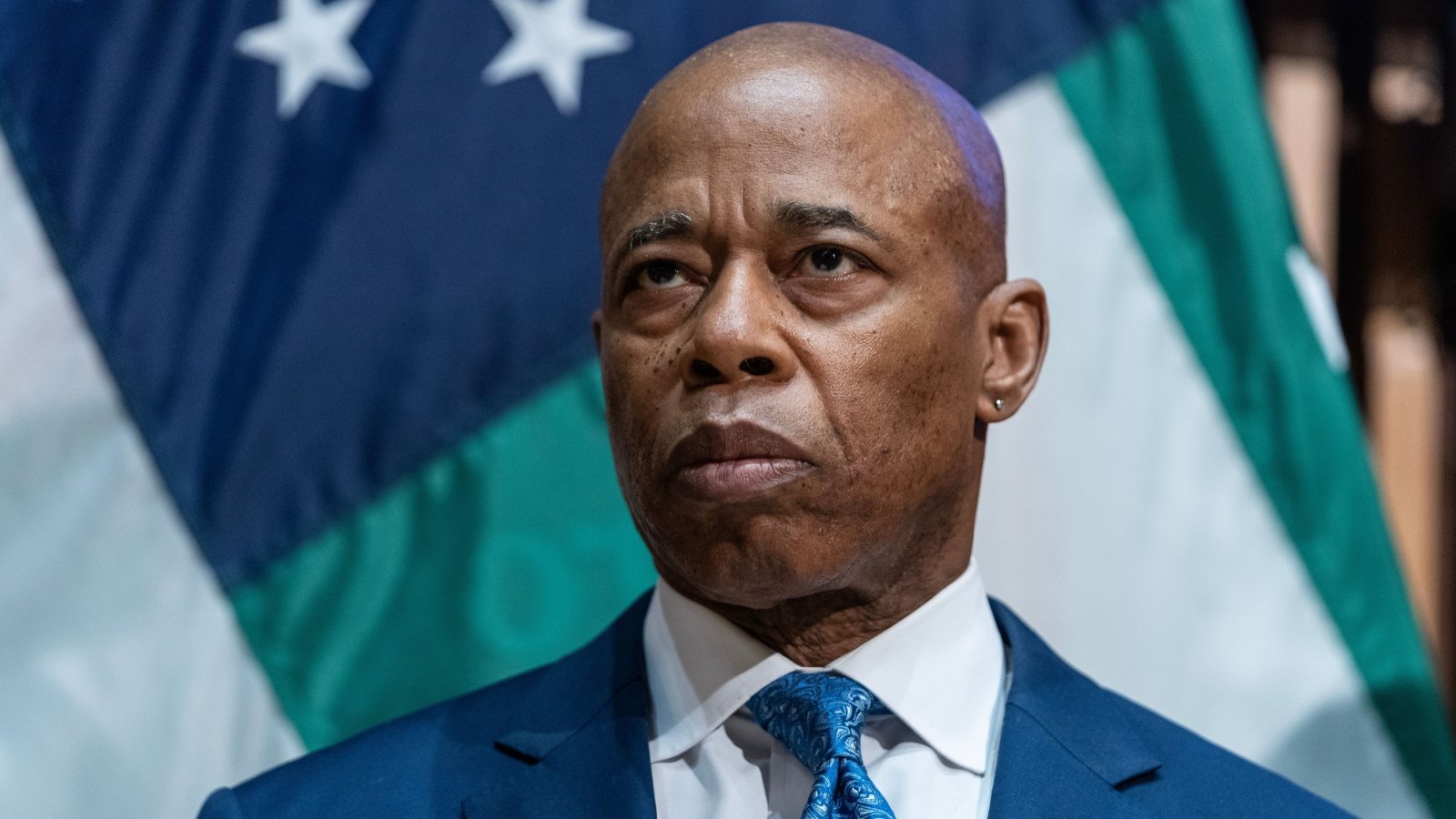
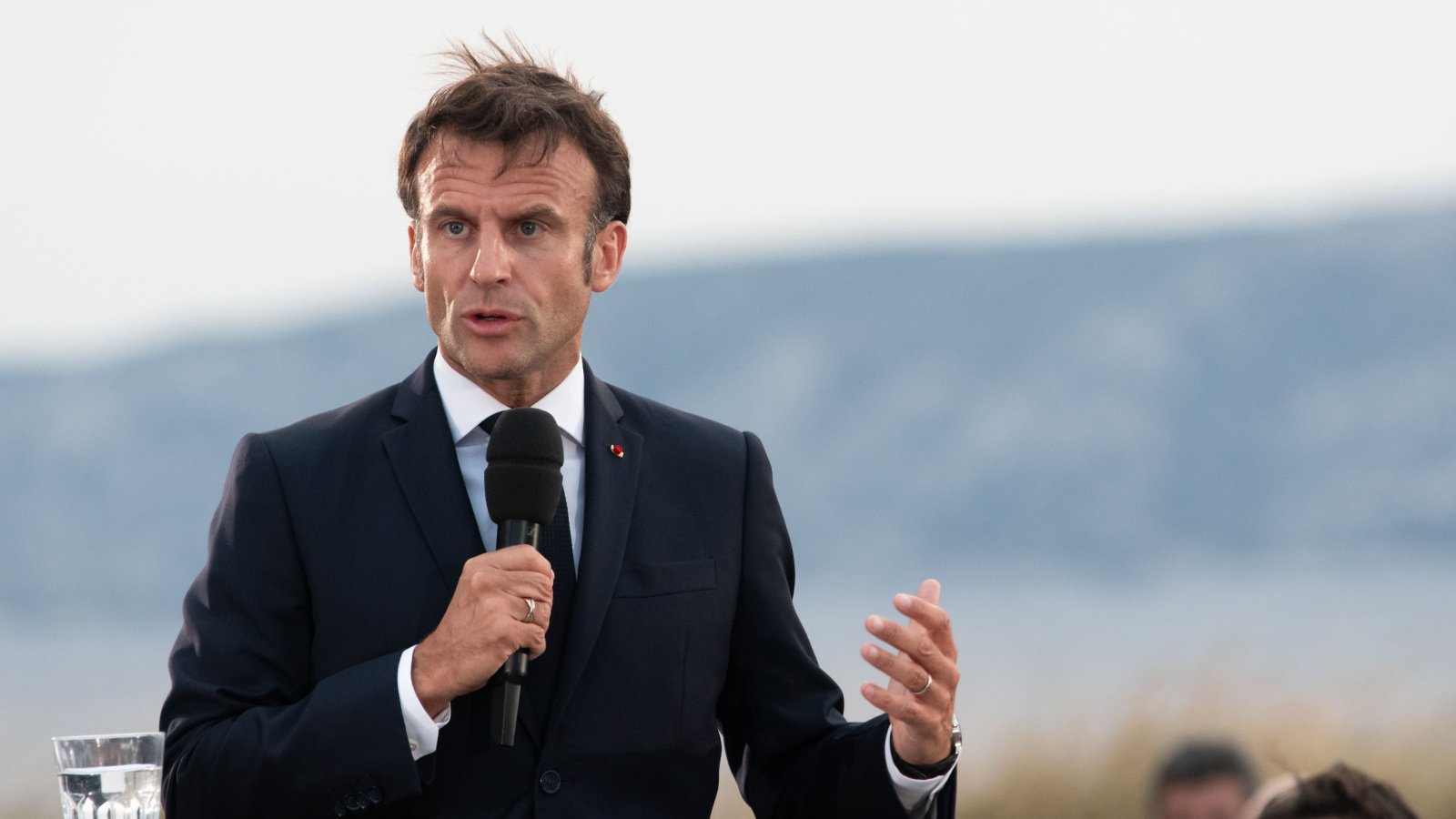
https://semaglupharm.com/# Semaglu Pharm
Buy cholesterol medicine online cheap: Crestor Pharm – rosuvastatin discount
https://semaglupharm.shop/# Online pharmacy Rybelsus
Predni Pharm [url=http://prednipharm.com/#]over the counter prednisone cheap[/url] prednisone 20mg capsule
http://prednipharm.com/# where can i get prednisone
Predni Pharm: prednisone brand name – prednisone generic cost
https://semaglupharm.com/# SemagluPharm
Crestor Pharm [url=https://crestorpharm.com/#]image crestor[/url] Crestor Pharm
prednisone pill: generic prednisone otc – Predni Pharm
https://semaglupharm.com/# Semaglu Pharm
icd 10 code for long term use of atorvastatin [url=http://lipipharm.com/#]LipiPharm[/url] LipiPharm
https://crestorpharm.shop/# rosuvastatin 10 mg para que sirve
Crestor Pharm: CrestorPharm – should i take rosuvastatin in the morning or evening
lipitor risks [url=https://lipipharm.com/#]Lipi Pharm[/url] LipiPharm
LipiPharm: Lipi Pharm – atorvastatin and beer
https://semaglupharm.shop/# Semaglu Pharm
Lipi Pharm [url=http://lipipharm.com/#]atorvastatin joint pain[/url] USA-based pharmacy Lipitor delivery
No RX Lipitor online: Lipi Pharm – does atorvastatin cause dizziness
https://semaglupharm.com/# SemagluPharm
https://semaglupharm.com/# does compounded semaglutide work
rosuvastatin 10 mg price [url=https://crestorpharm.shop/#]CrestorPharm[/url] Crestor Pharm
https://semaglupharm.com/# Rybelsus side effects and dosage
LipiPharm: FDA-approved generic statins online – Lipi Pharm
difference between pravastatin and atorvastatin [url=http://lipipharm.com/#]No RX Lipitor online[/url] Cheap Lipitor 10mg / 20mg / 40mg
atorvastatin side effects erectile dysfunction: LipiPharm – Safe atorvastatin purchase without RX
https://prednipharm.com/# prednisone buy cheap
https://semaglupharm.shop/# SemagluPharm
Crestor Pharm [url=https://crestorpharm.com/#]Over-the-counter Crestor USA[/url] rosuvastatin vs crestor
how much is rybelsus with medicare: semaglutide one month results – SemagluPharm
Lipi Pharm [url=http://lipipharm.com/#]Discreet shipping for Lipitor[/url] LipiPharm
LipiPharm: Lipi Pharm – Lipi Pharm
http://semaglupharm.com/# SemagluPharm
https://prednipharm.com/# prednisone 4mg
Online pharmacy Rybelsus [url=http://semaglupharm.com/#]how long can semaglutide stay out of the fridge[/url] Semaglu Pharm
LipiPharm: Lipi Pharm – Order cholesterol medication online
https://semaglupharm.com/# Semaglu Pharm
Crestor Pharm [url=http://crestorpharm.com/#]can crestor raise blood sugar[/url] CrestorPharm
pravastatin vs lipitor: side effects of lipitor 10 mg – Lipi Pharm
http://semaglupharm.com/# SemagluPharm
prednisone 10 mg tablets [url=http://prednipharm.com/#]PredniPharm[/url] PredniPharm
https://prednipharm.shop/# average cost of prednisone 20 mg
best online pharmacies in mexico: Meds From Mexico – Meds From Mexico
https://canadapharmglobal.shop/# ordering drugs from canada
canadapharmacyonline legit [url=https://canadapharmglobal.com/#]canadian pharmacy online[/url] canadian pharmacy ltd
pharmacy canadian: Canada Pharm Global – my canadian pharmacy rx
https://indiapharmglobal.shop/# indianpharmacy com
http://indiapharmglobal.com/# pharmacy website india
Meds From Mexico [url=https://medsfrommexico.shop/#]buying from online mexican pharmacy[/url] mexico drug stores pharmacies
pharmacy website india: India Pharm Global – india pharmacy mail order
http://canadapharmglobal.com/# canadian pharmacies comparison
Meds From Mexico: Meds From Mexico – mexican mail order pharmacies
canadian pharmacy online store [url=https://canadapharmglobal.shop/#]legal to buy prescription drugs from canada[/url] pharmacy in canada
https://medsfrommexico.shop/# best mexican online pharmacies
https://canadapharmglobal.com/# canadian pharmacy uk delivery
buy prescription drugs from india: online shopping pharmacy india – cheapest online pharmacy india
https://medsfrommexico.com/# Meds From Mexico
Meds From Mexico [url=https://medsfrommexico.com/#]best online pharmacies in mexico[/url] buying from online mexican pharmacy
buy medicines online in india: India Pharm Global – India Pharm Global
http://indiapharmglobal.com/# India Pharm Global
mexico pharmacies prescription drugs [url=https://medsfrommexico.com/#]Meds From Mexico[/url] Meds From Mexico
medication from mexico pharmacy: Meds From Mexico – buying from online mexican pharmacy
https://indiapharmglobal.shop/# India Pharm Global
reliable canadian online pharmacy: canadian pharmacy checker – canadian pharmacy 365
https://indiapharmglobal.shop/# reputable indian pharmacies
India Pharm Global [url=http://indiapharmglobal.com/#]best india pharmacy[/url] buy prescription drugs from india
http://indiapharmglobal.com/# online shopping pharmacy india
pharmacy rx world canada: Canada Pharm Global – legitimate canadian online pharmacies
canada pharmacy online [url=https://canadapharmglobal.shop/#]canadian pharmacy oxycodone[/url] best canadian pharmacy
https://indiapharmglobal.shop/# India Pharm Global
https://canadapharmglobal.shop/# canadian family pharmacy
India Pharm Global: India Pharm Global – India Pharm Global
canadian pharmacy meds reviews [url=https://canadapharmglobal.com/#]Canada Pharm Global[/url] canadian pharmacy no scripts
http://indiapharmglobal.com/# reputable indian online pharmacy
pharmacies in mexico that ship to usa: Meds From Mexico – Meds From Mexico
apotek finland leverans sverige [url=https://svenskapharma.com/#]köpa medicin på nätet[/url] e apotek
https://papafarma.com/# Papa Farma
http://raskapotek.com/# Rask Apotek
Svenska Pharma: apotek kollagen – var kan jag kГ¶pa
Papa Farma [url=https://papafarma.shop/#]Papa Farma[/url] Papa Farma
https://svenskapharma.com/# Svenska Pharma
farmacia ya: Papa Farma – Papa Farma
eritritolo bustine [url=https://efarmaciait.com/#]EFarmaciaIt[/url] EFarmaciaIt
http://svenskapharma.com/# se recept online
http://svenskapharma.com/# apotek tandkräm
shop rl: EFarmaciaIt – EFarmaciaIt
aptoek [url=https://svenskapharma.com/#]Svenska Pharma[/url] Svenska Pharma
https://efarmaciait.com/# minias gocce compra online
apotek gratis frakt: Гёremidd katt apotek – hydrogenperoksid apotek
https://svenskapharma.com/# blodtryck kvinna 55 ГҐr
http://raskapotek.com/# lysine apotek
Svenska Pharma [url=https://svenskapharma.com/#]kostar medicin till barn[/url] Svenska Pharma
Svenska Pharma: kolla mina recept – apotek sverige
https://svenskapharma.shop/# Svenska Pharma
paracetamol spanien [url=https://papafarma.shop/#]Papa Farma[/url] Papa Farma
Rask Apotek: Rask Apotek – Rask Apotek
https://efarmaciait.com/# EFarmaciaIt
http://svenskapharma.com/# vit fästing hund
mina tecept [url=https://svenskapharma.com/#]nytt apotek[/url] läkemedel lista
EFarmaciaIt: efacti crema recensioni – cavitГ significato
http://svenskapharma.com/# Svenska Pharma
Papa Farma [url=http://papafarma.com/#]Papa Farma[/url] Papa Farma
farmae ordine: top 10 marche integratori – eskim 1000 prezzo con ricetta
http://svenskapharma.com/# billiga apoteksvaror
https://papafarma.com/# farmacis
Papa Farma: clГnica veterinaria europa reseГ±as – Papa Farma
http://svenskapharma.com/# dygnet runt apotek
Svenska Pharma [url=https://svenskapharma.com/#]Svenska Pharma[/url] vГҐrta apotek
Rask Apotek: Rask Apotek – Rask Apotek
https://svenskapharma.shop/# Svenska Pharma
https://efarmaciait.shop/# EFarmaciaIt
Rask Apotek [url=https://raskapotek.shop/#]Rask Apotek[/url] apotek votter
Papa Farma: farmaonline 2 – viagra espaГ±a
farmaciashop [url=https://efarmaciait.shop/#]vertiserc gocce[/url] EFarmaciaIt
scalapay numero telefonico: EFarmaciaIt – trausan stick
bei apotheke bestellen [url=https://pharmajetzt.com/#]Pharma Jetzt[/url] apotal apotheke online shop
MedicijnPunt: medicijnen bestellen apotheek – Medicijn Punt
https://pharmaconfiance.com/# ddp nouvelle collection 2022
Pharma Confiance [url=http://pharmaconfiance.com/#]Pharma Confiance[/url] caudalie siege social
https://pharmajetzt.shop/# medikamente bestellen
https://pharmajetzt.shop/# apotal apotheke online shop bestellen
PharmaJetzt: pet apotheke – apothe online
PharmaJetzt [url=http://pharmajetzt.com/#]PharmaJetzt[/url] PharmaJetzt
http://pharmaconfiance.com/# pharmacie du commerce
Pharma Confiance: Pharma Confiance – discount pharmacy
Pharma Confiance [url=https://pharmaconfiance.shop/#]Pharma Confiance[/url] Pharma Confiance
http://medicijnpunt.com/# MedicijnPunt
https://pharmajetzt.shop/# Pharma Jetzt
Pharma Connect USA: 1st pharmacy net cialis acheter sur internet – hydroxyzine liquid pharmacy
shop apothek [url=http://pharmajetzt.com/#]Pharma Jetzt[/url] online apotheke pille danach
https://pharmajetzt.com/# Pharma Jetzt
Medicijn Punt: online medicijnen bestellen apotheek – medicine online
https://pharmaconfiance.shop/# Pharma Confiance
Pharma Confiance [url=https://pharmaconfiance.shop/#]pharmacie thionville[/url] Pharma Confiance
https://pharmajetzt.com/# Pharma Jetzt
homeopathie livre: Pharma Confiance – lapsa pro
https://pharmaconnectusa.com/# phuket pharmacy viagra
Pharma Connect USA [url=https://pharmaconnectusa.shop/#]levitra pharmacy prices[/url] Malegra FXT plus
Pharma Confiance: tel pharmacie – Pharma Confiance
https://pharmajetzt.shop/# PharmaJetzt
pzn suche [url=https://pharmajetzt.shop/#]luitpold apotheke[/url] shopping apotheke
http://pharmajetzt.com/# PharmaJetzt
viagra online pharmacy no prescription: PharmaConnectUSA – fda approved online pharmacy
http://pharmaconnectusa.com/# PharmaConnectUSA
avantages pilule slinda [url=https://pharmaconfiance.com/#]pharmacie avenue de france[/url] ivermectine ordonnance
Pharma Confiance: je vous en souhaite bonne rГ©ception et reste Г votre disposition pour tout complГ©ment d’information – Pharma Confiance
https://pharmajetzt.shop/# Pharma Jetzt
online pharmacy nl [url=https://medicijnpunt.com/#]Medicijn Punt[/url] MedicijnPunt
https://pharmaconnectusa.shop/# tadalafil usa pharmacy
https://pharmaconnectusa.com/# rite aid pharmacy cialis price
Pharma Connect USA: PharmaConnectUSA – fry’s food store pharmacy
PharmaJetzt [url=https://pharmajetzt.com/#]PharmaJetzt[/url] Pharma Jetzt
https://medicijnpunt.shop/# dokter online medicijnen bestellen
lasix mexican pharmacy: clopidogrel online pharmacy – valacyclovir hcl online pharmacy
medicijnen apotheek [url=http://medicijnpunt.com/#]medicijnen bestellen online[/url] Medicijn Punt
MedicijnPunt: online apotheek frankrijk – MedicijnPunt
https://pharmajetzt.com/# PharmaJetzt
online pharmacy acyclovir [url=https://pharmaconnectusa.com/#]PharmaConnectUSA[/url] dog pharmacy online
http://medicijnpunt.com/# Medicijn Punt
Medicijn Punt: apotheek nederland – apotheek online bestellen
http://medicijnpunt.com/# bestellen medicijnen
meilleure parapharmacie en ligne pas cher [url=https://pharmaconfiance.com/#]diclofenac frankrijk[/url] Pharma Confiance
Pharma Confiance: pharmacie lourdes – acheter codoliprane en ligne
https://medicijnpunt.shop/# medicine online
https://pharmaconnectusa.shop/# pharmacy online reviews
PharmaConnectUSA: Pharma Connect USA – propecia inhouse pharmacy
https://medicijnpunt.com/# Medicijn Punt
MedicijnPunt: Medicijn Punt – MedicijnPunt
https://pharmaconfiance.com/# pharmacie à domicile
http://pharmaconnectusa.com/# kroger pharmacy fluoxetine
Pharma Jetzt: PharmaJetzt – versand apotheke
https://pharmaconfiance.shop/# Pharma Confiance
Pharma Confiance: Pharma Confiance – amoxicilline chien sans ordonnance
https://pharmaconnectusa.com/# Pharma Connect USA
https://pharmajetzt.com/# apotheke gГјnstig
Pharma Jetzt: apotheken shop online – apotheken online
http://pharmajetzt.com/# Pharma Jetzt
Pharma Confiance: Pharma Confiance – Pharma Confiance
Пронедра [url=inforigin.ru]inforigin.ru[/url] .
http://pharmajetzt.com/# Pharma Jetzt
Лунный календарь [url=https://istoriamashin.ru/]istoriamashin.ru[/url] .
Запреты дня [url=https://topoland.ru/]topoland.ru[/url] .
https://pharmaconfiance.com/# Pharma Confiance
PharmaConnectUSA: PharmaConnectUSA – Pharma Connect USA
https://pharmajetzt.shop/# Pharma Jetzt
pharma apotheek: Medicijn Punt – de online apotheek
https://pharmajetzt.shop/# apotheke bad steben
usa online pharmacy: benicar hct online pharmacy – PharmaConnectUSA
http://medicijnpunt.com/# medicijne
https://pharmajetzt.shop/# apptheke online
PharmaConnectUSA: permethrin online pharmacy – PharmaConnectUSA
generic viagra online pharmacy review: Pharma Connect USA – online pharmacy pain
https://pharmaconnectusa.com/# compounding pharmacy online
https://pharmaconfiance.shop/# Pharma Confiance
shop-apotheke online: online apotheke ohne anmeldung – apotheke internet versandkostenfrei
http://pharmajetzt.com/# Pharma Jetzt
charcot fleurs: urgo logo – vente cialis france
http://pharmaconnectusa.com/# PharmaConnectUSA
https://pharmaconnectusa.shop/# sam’s club pharmacy hours
Pharma Confiance: medicament en w – Pharma Confiance
apotheken versand [url=http://pharmajetzt.com/#]shop apptheke[/url] Pharma Jetzt
afbeelding medicijnen: apotheek apotheek – Medicijn Punt
https://medicijnpunt.shop/# MedicijnPunt
PharmaConnectUSA: Pharma Connect USA – loratadine pharmacy
http://pharmaconfiance.com/# mГ©dicament flagyl
dragon slots [url=https://casinosdragonslots.eu/]dragon slots[/url] .
https://pharmajetzt.com/# günstige arzneimittel
Pharma Connect USA: PharmaConnectUSA – online pharmacy no prescription accutane
pokies101 [url=https://thepokiesnet101.com/]pokies101[/url] .
em produits de santГ© [url=http://pharmaconfiance.com/#]pharmacie d garde[/url] santГ© pharma en ligne
azithromycin online pharmacy no prescription: PharmaConnectUSA – texas online pharmacy
https://pharmaconnectusa.shop/# PharmaConnectUSA
https://pharmaconnectusa.shop/# peoples rx pharmacy austin
Pharma Jetzt: medikamente online kaufen – PharmaJetzt
Pharma Confiance [url=https://pharmaconfiance.com/#]Pharma Confiance[/url] Pharma Confiance
https://pharmaconfiance.shop/# pharmacie paris 12
ketoprofene et efferalgan: Pharma Confiance – pharmacie chateauneuf
http://pharmajetzt.com/# Pharma Jetzt
cialis en ligne: la parapharmacie – Pharma Confiance
online doktersrecept [url=https://medicijnpunt.com/#]MedicijnPunt[/url] Medicijn Punt
http://medicijnpunt.com/# apotheek apotheek
medicine store pharmacy: Endep – target pharmacy levitra
http://medicijnpunt.com/# mijn medicijn bestellen
wedgewood pharmacy flagyl [url=https://pharmaconnectusa.shop/#]safe rx pharmacy[/url] PharmaConnectUSA
Pharma Connect USA: target pharmacy price cialis – doxycycline tesco pharmacy
http://pharmaconnectusa.com/# PharmaConnectUSA
MedicijnPunt: Medicijn Punt – internetapotheek nederland
IndiMeds Direct [url=http://indimedsdirect.com/#]IndiMeds Direct[/url] IndiMeds Direct
https://indimedsdirect.com/# IndiMeds Direct
IndiMeds Direct: IndiMeds Direct – reputable indian online pharmacy
indian pharmacy paypal [url=https://indimedsdirect.com/#]IndiMeds Direct[/url] indian pharmacies safe
http://canrxdirect.com/# real canadian pharmacy
IndiMeds Direct: indian pharmacy – IndiMeds Direct
https://tijuanameds.shop/# medication from mexico pharmacy
buying from canadian pharmacies [url=https://canrxdirect.shop/#]CanRx Direct[/url] canadian drug stores
http://canrxdirect.com/# canadian neighbor pharmacy
TijuanaMeds: TijuanaMeds – mexican border pharmacies shipping to usa
IndiMeds Direct [url=http://indimedsdirect.com/#]reputable indian pharmacies[/url] IndiMeds Direct
https://indimedsdirect.shop/# online pharmacy india
legitimate canadian pharmacies: CanRx Direct – the canadian drugstore
https://tijuanameds.shop/# medication from mexico pharmacy
http://tijuanameds.com/# TijuanaMeds
TijuanaMeds [url=http://tijuanameds.com/#]buying prescription drugs in mexico online[/url] TijuanaMeds
legit canadian pharmacy online: CanRx Direct – buy canadian drugs
iflow видеодомофон [url=http://citadel-trade.ru]http://citadel-trade.ru[/url] .
cheap canadian pharmacy [url=http://canrxdirect.com/#]CanRx Direct[/url] prescription drugs canada buy online
электрокарнизы для штор купить [url=elektrokarniz90.ru]elektrokarniz90.ru[/url] .
safe reliable canadian pharmacy: CanRx Direct – my canadian pharmacy
шторы роллы на окна [url=http://www.elektricheskie-rulonnye-shtory99.ru]шторы роллы на окна[/url] .
рольшторы на окна купить в москве [url=http://www.rulonnye-shtory-s-elektroprivodom15.ru]http://www.rulonnye-shtory-s-elektroprivodom15.ru[/url] .
https://canrxdirect.shop/# canadian pharmacy sarasota
http://canrxdirect.com/# medication canadian pharmacy
online shopping pharmacy india [url=https://indimedsdirect.com/#]IndiMeds Direct[/url] indian pharmacy online
Online medicine home delivery: IndiMeds Direct – Online medicine home delivery
https://indimedsdirect.shop/# india pharmacy
indianpharmacy com [url=http://indimedsdirect.com/#]top online pharmacy india[/url] IndiMeds Direct
mail order pharmacy india: india online pharmacy – п»їlegitimate online pharmacies india
https://indimedsdirect.com/# IndiMeds Direct
pharmacy home delivery: RxFree Meds – 15 rx pharmacy
https://rxfreemeds.shop/# RxFree Meds
Farmacia Asequible [url=https://farmaciaasequible.com/#]Farmacia Asequible[/url] Farmacia Asequible
http://enclomiphenebestprice.com/# enclomiphene citrate
buy enclomiphene online: enclomiphene citrate – enclomiphene testosterone
enclomiphene testosterone [url=https://enclomiphenebestprice.com/#]buy enclomiphene online[/url] enclomiphene for sale
https://enclomiphenebestprice.shop/# enclomiphene for men
http://farmaciaasequible.com/# Farmacia Asequible
enclomiphene: enclomiphene best price – enclomiphene online
soolantra 10 mg crema precio [url=https://farmaciaasequible.shop/#]Farmacia Asequible[/url] dos farmacia
http://rxfreemeds.com/# RxFree Meds
generic provigil online pharmacy: target pharmacy amlodipine – overseas online pharmacy
enclomiphene best price [url=http://enclomiphenebestprice.com/#]enclomiphene best price[/url] enclomiphene for sale
https://rxfreemeds.com/# lorazepam pharmacy
enclomiphene buy: enclomiphene for sale – enclomiphene testosterone
http://rxfreemeds.com/# Voveran SR
farmacia zaragoza online [url=http://farmaciaasequible.com/#]ozempic 0,50[/url] Farmacia Asequible
https://rxfreemeds.shop/# online pharmacy cialis review
RxFree Meds: online pharmacy viagra generic – kamagra online pharmacy
RxFree Meds [url=http://rxfreemeds.com/#]mexican online pharmacy percocet[/url] online pharmacy testosterone
https://enclomiphenebestprice.com/# enclomiphene testosterone
http://farmaciaasequible.com/# Farmacia Asequible
farmacias web [url=https://farmaciaasequible.shop/#]fisiocrem contraindicaciones[/url] acheter sur amazon espagne
http://enclomiphenebestprice.com/# enclomiphene testosterone
https://farmaciaasequible.shop/# balsoprim para la tos
enclomiphene price [url=https://enclomiphenebestprice.com/#]buy enclomiphene online[/url] enclomiphene citrate
pharmacy viagra: RxFree Meds – viagra online pharmacy europe
http://rxfreemeds.com/# RxFree Meds
https://rxfreemeds.shop/# which pharmacy has the best price on viagra
Farmacia Asequible [url=https://farmaciaasequible.com/#]Farmacia Asequible[/url] Farmacia Asequible
значки на заказ металлические [url=https://znacki-na-zakaz.ru]https://znacki-na-zakaz.ru[/url] .
точные прогнозы на футбол [url=kompyuternye-prognozy-na-futbol1.ru]точные прогнозы на футбол[/url] .
movicol sin receta [url=https://farmaciaasequible.shop/#]Farmacia Asequible[/url] Farmacia Asequible
https://farmaciaasequible.com/# opiniones the box
enclomiphene for men [url=https://enclomiphenebestprice.shop/#]enclomiphene buy[/url] enclomiphene buy
Farmacia Asequible [url=http://farmaciaasequible.com/#]Farmacia Asequible[/url] crema de cannabi para el dolor opiniones
Farmacia Asequible [url=https://farmaciaasequible.com/#]www.farmaci[/url] Farmacia Asequible
http://enclomiphenebestprice.com/# enclomiphene testosterone
Farmacia Asequible [url=https://farmaciaasequible.com/#]Farmacia Asequible[/url] oralb io 10
кашпо для дома напольное [url=http://kashpo-napolnoe-msk.ru/]кашпо для дома напольное[/url] .
accurate rx pharmacy columbia mo [url=https://rxfreemeds.com/#]voltaren online pharmacy[/url] mexican pharmacy prednisone
http://enclomiphenebestprice.com/# enclomiphene online
irmat pharmacy [url=http://rxfreemeds.com/#]house pharmacy finpecia[/url] mexican pharmacy concerta
прогнозы на футбол сегодня с анализом [url=http://kompyuternye-prognozy-na-futbol3.ru]http://kompyuternye-prognozy-na-futbol3.ru[/url] .
хоккейные прогнозы на сегодня [url=https://www.luchshie-prognozy-na-khokkej.ru]https://www.luchshie-prognozy-na-khokkej.ru[/url] .
gelasimi para que sirve [url=http://farmaciaasequible.com/#]diprogenta precio[/url] movicol sobres prospecto
https://rxfreemeds.shop/# online pharmacy diflucan
mostbet esports mərclər [url=https://www.mostbet3041.ru]https://www.mostbet3041.ru[/url]
over the counter online pharmacy [url=https://rxfreemeds.com/#]RxFree Meds[/url] RxFree Meds
enclomiphene citrate [url=https://enclomiphenebestprice.com/#]enclomiphene[/url] enclomiphene best price
https://enclomiphenebestprice.com/# enclomiphene online
coop pharmacy store locator [url=http://rxfreemeds.com/#]finpecia uk pharmacy[/url] online no prescription pharmacy
drogueria online espaГ±a [url=https://farmaciaasequible.com/#]Farmacia Asequible[/url] Farmacia Asequible
https://enclomiphenebestprice.com/# enclomiphene for men
RxFree Meds [url=https://rxfreemeds.shop/#]RxFree Meds[/url] RxFree Meds
enclomiphene online [url=https://enclomiphenebestprice.shop/#]buy enclomiphene online[/url] enclomiphene testosterone
где купить айфон спб [url=https://www.kupit-ajfon-cs.ru]https://www.kupit-ajfon-cs.ru[/url] .
https://rxfreemeds.com/# viagra uk online pharmacy
RxFree Meds [url=https://rxfreemeds.shop/#]RxFree Meds[/url] rohypnol mexican pharmacy
enclomiphene [url=https://enclomiphenebestprice.shop/#]enclomiphene price[/url] enclomiphene buy
1win .com [url=1win3027.com]1win3027.com[/url]
https://farmaciaasequible.shop/# farmacja
promo pharma [url=https://farmaciaasequible.shop/#]diprogenta precio en espaГ±a[/url] sex shop poligono
http://farmaciaasequible.com/# melatonina 5 mg amazon
european pharmacy org buy strattera online: pharmacy express viagra – pharmacy2u orlistat
купит айфон спб [url=http://www.kupit-ajfon-cs3.ru]купит айфон спб[/url] .
http://rxfreemeds.com/# online pharmacy buy adipex
buy enclomiphene online: enclomiphene buy – enclomiphene citrate
mostbet aviator oyunu [url=mostbet4048.ru]mostbet aviator oyunu[/url]
IndoMeds USA [url=https://indomedsusa.shop/#]online shopping pharmacy india[/url] indian pharmacy
cialis viagra pharmacy: pharmacy in artane castle – inhouse pharmacy propecia
https://meximedsexpress.com/# MexiMeds Express
best online pharmacy india [url=https://indomedsusa.com/#]indian pharmacies safe[/url] Online medicine home delivery
mexico drug stores pharmacies: MexiMeds Express – MexiMeds Express
https://indomedsusa.com/# IndoMeds USA
http://indomedsusa.com/# buy prescription drugs from india
mexican drugstore online: MexiMeds Express – MexiMeds Express
https://medismartpharmacy.com/# generic lexapro online pharmacy
IndoMeds USA [url=https://indomedsusa.com/#]Online medicine order[/url] IndoMeds USA
1win company [url=https://www.1win3025.com]1win company[/url]
1 win app review [url=http://www.1win-in1.com]1 win app review[/url] .
электрические карнизы для штор в москве [url=https://www.elektrokarnizy10.ru]https://www.elektrokarnizy10.ru[/url] .
IndoMeds USA: mail order pharmacy india – IndoMeds USA
https://meximedsexpress.com/# pharmacies in mexico that ship to usa
mexican border pharmacies shipping to usa [url=https://meximedsexpress.shop/#]MexiMeds Express[/url] mexican rx online
https://indomedsusa.com/# IndoMeds USA
https://medismartpharmacy.shop/# plavix online pharmacy
nps online pharmacy: Ditropan – maxalt online pharmacy
1win net worth [url=https://1win3024.com]https://1win3024.com[/url]
baclofen river pharmacy [url=http://medismartpharmacy.com/#]lortab online pharmacy no prescription[/url] online pharmacy lortab no prescription
http://indomedsusa.com/# IndoMeds USA
elocon cream boots pharmacy: MediSmart Pharmacy – kroger pharmacy fluoxetine
MexiMeds Express [url=https://meximedsexpress.com/#]buying prescription drugs in mexico[/url] MexiMeds Express
http://medismartpharmacy.com/# online pharmacy reviews percocet
https://meximedsexpress.shop/# mexico pharmacies prescription drugs
anti-depressants: MediSmart Pharmacy – generic cialis us pharmacy
india pharmacy mail order [url=https://indomedsusa.com/#]indian pharmacy paypal[/url] cheapest online pharmacy india
online ativan pharmacy: sav on pharmacy store locator – ad rx pharmacy
MexiMeds Express [url=https://meximedsexpress.com/#]MexiMeds Express[/url] best online pharmacies in mexico
https://indomedsusa.shop/# top online pharmacy india
https://indomedsusa.shop/# IndoMeds USA
cheapest online pharmacy india: reputable indian online pharmacy – IndoMeds USA
kamagra pharmacy bangkok [url=https://medismartpharmacy.shop/#]pharmacy symbol rx[/url] spanish pharmacy online
https://meximedsexpress.com/# MexiMeds Express
IndoMeds USA: IndoMeds USA – IndoMeds USA
паркетная доска FLOORWOOD купить в Москве [url=http://parketnay-doska2.ru]http://parketnay-doska2.ru[/url] .
fred meyer pharmacy hours [url=https://medismartpharmacy.com/#]MediSmart Pharmacy[/url] aciclovir tablets pharmacy
http://indomedsusa.com/# IndoMeds USA
MexiMeds Express: MexiMeds Express – MexiMeds Express
http://medismartpharmacy.com/# drug store
MexiMeds Express [url=http://meximedsexpress.com/#]MexiMeds Express[/url] mexican rx online
п»їbest mexican online pharmacies: pharmacies in mexico that ship to usa – MexiMeds Express
https://meximedsexpress.com/# medicine in mexico pharmacies
1win az giriş [url=http://1win3040.com]http://1win3040.com[/url]
Online medicine order [url=https://indomedsusa.com/#]IndoMeds USA[/url] top 10 pharmacies in india
MexiMeds Express: pharmacies in mexico that ship to usa – medication from mexico pharmacy
https://medismartpharmacy.shop/# online pharmacy india
http://indomedsusa.com/# IndoMeds USA
provigil overseas pharmacy [url=https://medismartpharmacy.shop/#]MediSmart Pharmacy[/url] diazepam online pharmacy
buy medicines online in india: online shopping pharmacy india – IndoMeds USA
https://meximedsexpress.shop/# reputable mexican pharmacies online
percocet online pharmacy reviews [url=http://medismartpharmacy.com/#]rx plus pharmacy[/url] sumatriptan online pharmacy
medication from mexico pharmacy: MexiMeds Express – mexican border pharmacies shipping to usa
https://medismartpharmacy.shop/# methotrexate pharmacy error
can you use target pharmacy rewards online [url=https://medismartpharmacy.shop/#]nortriptyline online pharmacy[/url] pharmacy support team viagra
IndoMeds USA: Online medicine order – IndoMeds USA
http://indomedsusa.com/# mail order pharmacy india
mexican drugstore online [url=https://meximedsexpress.shop/#]medication from mexico pharmacy[/url] mexican pharmaceuticals online
IndoMeds USA: top 10 online pharmacy in india – online pharmacy india
https://indomedsusa.shop/# IndoMeds USA
MexiMeds Express [url=https://meximedsexpress.shop/#]medicine in mexico pharmacies[/url] MexiMeds Express
https://ordinasalute.com/# farmacia online con spedizione gratuita
acheter cialis original en ligne sans ordonnance: prix finasteride – ordonnance d’exception exemple
https://pharmadirecte.shop/# quel antibiotique sans ordonnance
la pharmacie peut elle retrouver une ordonnance [url=http://pharmadirecte.com/#]PharmaDirecte[/url] cialis 5 mg prix france
https://clinicagaleno.shop/# mascarillas farmacia online
maxalt prezzo: algix 60 prezzo e mutuabile – farmacia online cagliari
новые аппараты узи [url=http://www.kupit-uzi-apparat15.ru]новые аппараты узи[/url] .
http://pharmadirecte.com/# quel antibiotique sans ordonnance
farmacia veterinaria online andorra [url=https://clinicagaleno.com/#]Clinica Galeno[/url] pedido online farmacia
farmacia pedidos online: Clinica Galeno – se puede comprar parches anticonceptivos sin receta medica
https://pharmadirecte.shop/# dГ©sinfectants urinaires (vendus en pharmacie sans ordonnance)
https://ordinasalute.com/# timogel collirio monodose
miglior prezzo farmacia online: OrdinaSalute – macladin 500 prezzo
farmacia online segovia [url=https://clinicagaleno.shop/#]Clinica Galeno[/url] aciclovir pastillas comprar sin receta
https://ordinasalute.com/# farmacia economica online
ordonnance doliprane: ou acheter ozempic sans ordonnance – peut on acheter une attelle en pharmacie sans ordonnance
priligy prezzo [url=https://ordinasalute.com/#]OrdinaSalute[/url] farmacia dr max bologna
https://clinicagaleno.com/# puedo comprar amoxicilina sin receta
https://ordinasalute.com/# cortisone al cane
durex jeans: comment avoir des antibiotiques sans ordonnance – spray nasal avec ordonnance
debridat prezzo [url=http://ordinasalute.com/#]fentanil cerotto prezzo[/url] fluimucil antibiotico 500 per aerosol prezzo
http://pharmadirecte.com/# pharmacie sans ordonnance fiable
se puede comprar lorazepam sin receta espaГ±a: se puede comprar atarax sin receta – farmacia online nicorette
equivalent secnol sans ordonnance [url=https://pharmadirecte.com/#]acheter pilule pharmacie sans ordonnance[/url] attelle en pharmacie sans ordonnance
1win casino [url=https://1win3048.com/]https://1win3048.com/[/url]
http://ordinasalute.com/# si può dare il bentelan al cane
pentacol gel rettale prezzo: testosterone farmacia online – dibase 100.000
farmacia online germania [url=https://clinicagaleno.com/#]farmacia del vaticano acquisti online[/url] farmacia leone online
http://ordinasalute.com/# lyrica 75 mg 56 capsule prezzo
http://snabbapoteket.com/# apotek aloe vera
https://tryggmed.shop/# elektrolytter tabletter apotek
apotek ГҐpen nГҐ [url=https://tryggmed.com/#]Trygg Med[/url] magnetarmbГҐnd apotek
http://zorgpakket.com/# bestellen apotheek
nagelsvamp händer bilder [url=https://snabbapoteket.shop/#]munskydd för barn apotek[/url] hämta ut recept apotek
http://snabbapoteket.com/# loratadin 10 mg
https://snabbapoteket.shop/# repair kräm
ons medicatie voor apotheken [url=http://zorgpakket.com/#]MedicijnPunt[/url] pharmacy nederlands
https://snabbapoteket.shop/# apotekk
apotek shampoo [url=https://snabbapoteket.com/#]SnabbApoteket[/url] vibrator billig
прогнозы на спорт бесплатно [url=prognozy-na-sport-3.ru]прогнозы на спорт бесплатно[/url] .
http://tryggmed.com/# salisylsyre krem apotek
1win logo [url=https://1win3045.com/]https://1win3045.com/[/url]
https://tryggmed.com/# påskeåpent apotek
online apotheek 24 [url=https://zorgpakket.shop/#]Medicijn Punt[/url] netherlands online pharmacy
http://snabbapoteket.com/# åldersgräns apotek
https://zorgpakket.shop/# farmacie medicijn
https://snabbapoteket.shop/# öronvax sug apotek
buy meds from mexican pharmacy [url=https://medimexicorx.shop/#]buy viagra from mexican pharmacy[/url] cheap cialis mexico
http://expresscarerx.org/# online pharmacy that sell adipex
online shopping pharmacy india [url=http://indiamedshub.com/#]reputable indian online pharmacy[/url] online shopping pharmacy india
http://medimexicorx.com/# MediMexicoRx
melbet .com [url=https://melbet3004.com]https://melbet3004.com[/url]
https://medimexicorx.shop/# purple pharmacy mexico price list
ExpressCareRx: ExpressCareRx – ExpressCareRx
IndiaMedsHub [url=http://indiamedshub.com/#]indian pharmacy[/url] IndiaMedsHub
https://indiamedshub.com/# online shopping pharmacy india
https://expresscarerx.online/# ad rx pharmacy
safe place to buy semaglutide online mexico [url=https://medimexicorx.shop/#]zithromax mexican pharmacy[/url] best prices on finasteride in mexico
https://expresscarerx.org/# online pharmacy meds
mostbet uz tennis tikish [url=https://www.mostbet4075.ru]https://www.mostbet4075.ru[/url]
Online medicine order: IndiaMedsHub – india pharmacy
order viagra online pharmacy [url=http://expresscarerx.org/#]Cytoxan[/url] ExpressCareRx
https://indiamedshub.shop/# india pharmacy
zyrtec d online pharmacy: accutane pharmacy prices – ExpressCareRx
safe mexican online pharmacy [url=https://medimexicorx.com/#]MediMexicoRx[/url] order azithromycin mexico
http://indiamedshub.com/# india pharmacy mail order
https://medimexicorx.com/# medication from mexico pharmacy
лестница на заказ [url=www.lestnicy-na-metallokarkase-4.ru]лестница на заказ[/url] .
Etodolac: ExpressCareRx – pharmacy usa store
reputable indian online pharmacy [url=http://indiamedshub.com/#]IndiaMedsHub[/url] IndiaMedsHub
https://indiamedshub.shop/# IndiaMedsHub
п»їlegitimate online pharmacies india: Online medicine home delivery – IndiaMedsHub
https://expresscarerx.online/# compound pharmacy
ExpressCareRx [url=https://expresscarerx.online/#]online pharmacy ambien no prescription[/url] pharmacy store hours
https://indiamedshub.com/# IndiaMedsHub
ExpressCareRx: can you buy viagra at the pharmacy – ExpressCareRx
https://indiamedshub.com/# world pharmacy india
buy antibiotics from mexico [url=https://medimexicorx.com/#]get viagra without prescription from mexico[/url] low cost mexico pharmacy online
https://expresscarerx.org/# ambien online pharmacy review
http://medimexicorx.com/# mexican drugstore online
cheapest online pharmacy india [url=http://indiamedshub.com/#]india online pharmacy[/url] mail order pharmacy india
Accutane for sale: order isotretinoin from Canada to US – purchase generic Accutane online discreetly
https://tadalafilfromindia.com/# generic Cialis from India
lexapro online [url=https://lexapro.pro/#]Lexapro for depression online[/url] lexapro online no prescription
Zoloft for sale: buy Zoloft online without prescription USA – Zoloft online pharmacy USA
http://isotretinoinfromcanada.com/# order isotretinoin from Canada to US
tadalafil online no rx [url=https://tadalafilfromindia.shop/#]generic tadalafil from india[/url] tadalafil online no rx
lexapro 20 mg discount: Lexapro for depression online – Lexapro for depression online
https://tadalafilfromindia.com/# Tadalafil From India
app for mental health support [url=www.mental-health23.com/]www.mental-health23.com/[/url] .
https://finasteridefromcanada.com/# generic Finasteride without prescription
generic Finasteride without prescription [url=https://finasteridefromcanada.shop/#]Propecia for hair loss online[/url] generic Finasteride without prescription
where can i purchase lexapro online: lexapro brand name – generic lexapro 20 mg cost
https://isotretinoinfromcanada.shop/# order isotretinoin from Canada to US
Isotretinoin From Canada [url=https://isotretinoinfromcanada.shop/#]Accutane for sale[/url] USA-safe Accutane sourcing
https://isotretinoinfromcanada.shop/# isotretinoin online
order isotretinoin from Canada to US: generic isotretinoin – isotretinoin online
http://tadalafilfromindia.com/# where to buy tadalafil in usa
Cialis without prescription [url=https://tadalafilfromindia.com/#]buy Cialis online cheap[/url] tadalafil cheapest price
https://zoloft.company/# buy Zoloft online without prescription USA
Lexapro for depression online: buy lexapro online without prescription – where can you buy lexapro
Lexapro for depression online [url=https://lexapro.pro/#]best price for lexapro generic[/url] lexapro generic over the counter
Tadalafil From India: Tadalafil From India – cheap 10 mg tadalafil
https://zoloft.company/# cheap Zoloft
https://tadalafilfromindia.com/# tadalafil online without prescription
cheap Accutane [url=https://isotretinoinfromcanada.com/#]Accutane for sale[/url] generic isotretinoin
Finasteride From Canada: cheap Propecia Canada – cheap Propecia Canada
winline бонус за регистрацию без депозита [url=https://winlayne-fribet1.ru/]https://winlayne-fribet1.ru/[/url] .
https://zoloft.company/# buy Zoloft online without prescription USA
purchase generic Zoloft online discreetly [url=https://zoloft.company/#]buy Zoloft online without prescription USA[/url] sertraline online
Напольный КварцВинил на кухню. [url=https://napolnaya-probka1.ru/]napolnaya-probka1.ru[/url] .
cheap Cialis Canada: 80 mg tadalafil – tadalafil online no rx
https://lexapro.pro/# buy lexapro without prescription
https://finasteridefromcanada.shop/# Finasteride From Canada
mostbet betting app [url=http://www.mostbetdownload-apk.com]http://www.mostbetdownload-apk.com[/url] .
buying propecia no prescription [url=https://finasteridefromcanada.shop/#]cost of cheap propecia without dr prescription[/url] cheap Propecia Canada
buy Accutane online: Accutane for sale – USA-safe Accutane sourcing
https://finasteridefromcanada.shop/# generic Finasteride without prescription
generic Cialis from India [url=https://tadalafilfromindia.com/#]cheap Cialis Canada[/url] generic tadalafil india
generic Cialis from India: Tadalafil From India – cheap Cialis Canada
https://zoloft.company/# buy Zoloft online
1win պաշտոնական կայք [url=https://1win3073.ru]1win պաշտոնական կայք[/url]
http://tadalafilfromindia.com/# Cialis without prescription
Lexapro for depression online [url=https://lexapro.pro/#]buy cheap lexapro online[/url] how much is lexapro in australia
https://lexapro.pro/# lexapro prescription
best price for lexapro [url=https://lexapro.pro/#]Lexapro for depression online[/url] Lexapro for depression online
http://finasteridefromcanada.com/# Propecia for hair loss online
Finasteride From Canada [url=https://finasteridefromcanada.com/#]generic Finasteride without prescription[/url] Finasteride From Canada
isotretinoin online [url=https://isotretinoinfromcanada.shop/#]purchase generic Accutane online discreetly[/url] isotretinoin online
buy Zoloft online without prescription USA [url=https://zoloft.company/#]Zoloft for sale[/url] generic sertraline
https://zoloft.company/# Zoloft Company
https://lexapro.pro/# lexapro cost australia
система водопонижения грунтовых вод [url=http://www.vodoponizhenie-msk.ru]http://www.vodoponizhenie-msk.ru[/url] .
WakeMedsRX: wakefulness medication online no Rx – where to buy Modafinil legally in the US
safe Provigil online delivery service [url=https://wakemedsrx.shop/#]wakefulness medication online no Rx[/url] buy Modafinil online USA
http://wakemedsrx.com/# nootropic Modafinil shipped to USA
prednisone medicine: prednisone generic cost – where can i buy prednisone without a prescription
amoxicillin 875 mg tablet [url=https://clearmedsdirect.shop/#]how to get amoxicillin[/url] antibiotic treatment online no Rx
order corticosteroids without prescription: buy prednisone tablets online – Relief Meds USA
http://reliefmedsusa.com/# ReliefMeds USA
prescription-free Modafinil alternatives: WakeMeds RX – order Provigil without prescription
ReliefMeds USA [url=https://reliefmedsusa.com/#]can you buy prednisone online uk[/url] order corticosteroids without prescription
строительное водопонижение [url=https://vodoponizhenie-msk.ru]строительное водопонижение[/url] .
how much gabapentin should i take for rls: gabapentin and phenibut combo – NeuroRelief Rx
prednisone 10 tablet [url=https://reliefmedsusa.shop/#]ReliefMeds USA[/url] Relief Meds USA
http://neuroreliefrx.com/# NeuroRelief Rx
order corticosteroids without prescription: anti-inflammatory steroids online – anti-inflammatory steroids online
anti-inflammatory steroids online: anti-inflammatory steroids online – ReliefMeds USA
clomid price [url=https://clomidhubpharmacy.com/#]Clomid Hub Pharmacy[/url] Clomid Hub
Clear Meds Direct [url=http://clearmedsdirect.com/#]order amoxicillin without prescription[/url] Clear Meds Direct
https://clearmedsdirect.shop/# low-cost antibiotics delivered in USA
gabapentin for breast cancer pain [url=http://neuroreliefrx.com/#]NeuroRelief Rx[/url] NeuroRelief Rx
prednisone 5 mg cheapest: ReliefMeds USA – Relief Meds USA
бесплатные прогнозы на спорт [url=http://prognoz-na-segodnya-na-sport9.ru]бесплатные прогнозы на спорт[/url] .
ReliefMeds USA: Relief Meds USA – Relief Meds USA
https://neuroreliefrx.shop/# NeuroRelief Rx
order corticosteroids without prescription: buy prednisone tablets online – prednisone 10mg tablets
where can i get cheap clomid for sale [url=http://clomidhubpharmacy.com/#]Clomid Hub Pharmacy[/url] Clomid Hub Pharmacy
самые точные прогнозы на нхл [url=https://www.luchshie-prognozy-na-khokkej6.ru]https://www.luchshie-prognozy-na-khokkej6.ru[/url] .
canada pharmacy prednisone: prednisone price south africa – ReliefMeds USA
мостбет [url=www.students.com.kg]мостбет[/url]
how can i get generic clomid without insurance [url=http://clomidhubpharmacy.com/#]get generic clomid pills[/url] cheap clomid now
http://clearmedsdirect.com/# antibiotic treatment online no Rx
anti-inflammatory steroids online: Relief Meds USA – order corticosteroids without prescription
ставки на хоккей прогнозы от профессионалов [url=prognoz-na-segodnya-na-sport9.ru]prognoz-na-segodnya-na-sport9.ru[/url] .
buying clomid without dr prescription [url=https://clomidhubpharmacy.com/#]Clomid Hub[/url] where buy cheap clomid now
ReliefMeds USA: ReliefMeds USA – prednisone cream over the counter
NeuroRelief Rx: equine gabapentin dose – NeuroRelief Rx
http://neuroreliefrx.com/# NeuroRelief Rx
buy medicines online in india: IndiGenix Pharmacy – IndiGenix Pharmacy
CanadRx Nexus: pharmacy rx world canada – CanadRx Nexus
CanadRx Nexus: CanadRx Nexus – CanadRx Nexus
canadian pharmacy 365: reputable canadian pharmacy – canadian drug pharmacy
candy casino [url=https://candy-casino-7.com/]candy-casino-7.com[/url] .
slot giri? [url=http://candy-casino-2.com]http://candy-casino-2.com[/url] .
http://mexicarerxhub.com/# MexiCare Rx Hub
legit mexican pharmacy for hair loss pills: MexiCare Rx Hub – MexiCare Rx Hub
888starz bet [url=https://www.starz888.pro]888starz bet[/url] .
canadian pharmacy no rx needed: CanadRx Nexus – canadian pharmacy online
buy antibiotics over the counter in mexico: п»їmexican pharmacy – MexiCare Rx Hub
IndiGenix Pharmacy: IndiGenix Pharmacy – IndiGenix Pharmacy
https://canadrxnexus.com/# CanadRx Nexus
canadianpharmacyworld: CanadRx Nexus – CanadRx Nexus
medicine in mexico pharmacies: medication from mexico pharmacy – MexiCare Rx Hub
top 10 online pharmacy in india: indian pharmacy online – indianpharmacy com
MexiCare Rx Hub: mexican pharmaceuticals online – MexiCare Rx Hub
casino candy [url=https://candy-casino-7.com/]https://candy-casino-7.com/[/url] .
melbet kg [url=https://melbet1031.ru]melbet kg[/url]
888starz site [url=www.starz888.pro/]www.starz888.pro/[/url] .
http://indigenixpharm.com/# IndiGenix Pharmacy
IndiGenix Pharmacy: world pharmacy india – top online pharmacy india
reputable indian pharmacies: best india pharmacy – IndiGenix Pharmacy
IndiGenix Pharmacy: IndiGenix Pharmacy – indian pharmacies safe
online canadian pharmacy review: drugs from canada – CanadRx Nexus
CanadRx Nexus: canada discount pharmacy – reliable canadian pharmacy reviews
buying from online mexican pharmacy: MexiCare Rx Hub – best mexican online pharmacies
винлайн промокод на фрибет без депозита сегодня [url=www.winline-bonus-za-registraciyu-2025.ru]www.winline-bonus-za-registraciyu-2025.ru[/url] .
MexiCare Rx Hub: MexiCare Rx Hub – MexiCare Rx Hub
best online pharmacies in mexico: buying from online mexican pharmacy – pharmacies in mexico that ship to usa
https://mexicarerxhub.shop/# MexiCare Rx Hub
MexiCare Rx Hub: MexiCare Rx Hub – MexiCare Rx Hub
CanadRx Nexus: CanadRx Nexus – CanadRx Nexus
mexico pharmacy: MexiCare Rx Hub – MexiCare Rx Hub
mexico pharmacies prescription drugs: MexiCare Rx Hub – MexiCare Rx Hub
https://fluidcarepharmacy.shop/# lasix 100mg
оригинальные горшки для цветов купить [url=https://dizaynerskie-kashpo-sochi.ru]оригинальные горшки для цветов купить[/url] .
Tizanidine 2mg 4mg tablets for sale: relief from muscle spasms online – prescription-free muscle relaxants
how does rybelsus help you lose weight [url=http://glucosmartrx.com/#]AsthmaFree Pharmacy[/url] semaglutide oral dose for weight loss
прокарниз [url=http://elektrokarniz150.ru]http://elektrokarniz150.ru[/url] .
generic lasix: FluidCare Pharmacy – FluidCare Pharmacy
fabrica de mobila [url=www.1win40001.ru]fabrica de mobila[/url]
half life of semaglutide [url=https://glucosmartrx.shop/#]AsthmaFree Pharmacy[/url] AsthmaFree Pharmacy
https://glucosmartrx.shop/# can i take tylenol with rybelsus
FluidCare Pharmacy: generic lasix – lasix tablet
order Tizanidine without prescription: cheap muscle relaxer online USA – Zanaflex medication fast delivery
IverCare Pharmacy [url=http://ivercarepharmacy.com/#]IverCare Pharmacy[/url] how ivermectin works
ventolin prices: ventolin otc australia – ventolin mexico
IverCare Pharmacy [url=https://ivercarepharmacy.com/#]mexico city ivermectin[/url] ivermectin and blood thinners
http://glucosmartrx.com/# rybelsus semaglutide tablets
lasix 100 mg [url=https://fluidcarepharmacy.shop/#]FluidCare Pharmacy[/url] furosemide 40mg
электрокарнизы для штор купить в москве [url=https://www.elektrokarniz150.ru]https://www.elektrokarniz150.ru[/url] .
мостбет вывести деньги [url=www.mostbet4080.ru]мостбет вывести деньги[/url]
IverCare Pharmacy [url=http://ivercarepharmacy.com/#]IverCare Pharmacy[/url] ivermectin buy australia
888starz apk download [url=egypt888starz.net]egypt888starz.net[/url] .
FluidCare Pharmacy: lasix 100 mg tablet – FluidCare Pharmacy
https://asthmafreepharmacy.com/# AsthmaFree Pharmacy
IverCare Pharmacy [url=https://ivercarepharmacy.shop/#]ivermectin cattle[/url] IverCare Pharmacy
оригинальные кашпо для цветов [url=https://dizaynerskie-kashpo-sochi.ru/]оригинальные кашпо для цветов[/url] .
1exbet [url=https://parimatch-apk.pro]1exbet[/url] .
AsthmaFree Pharmacy [url=https://glucosmartrx.shop/#]AsthmaFree Pharmacy[/url] AsthmaFree Pharmacy
rybelsus pi: AsthmaFree Pharmacy – AsthmaFree Pharmacy
chiterskiy.ru [url=https://chiterskiy.ru]https://chiterskiy.ru[/url] .
tanzil labat 888starz [url=https://egypt888starz.net]https://egypt888starz.net[/url] .
affordable Zanaflex online pharmacy [url=https://relaxmedsusa.shop/#]Tizanidine tablets shipped to USA[/url] prescription-free muscle relaxants
https://ivercarepharmacy.com/# ivermectin heartworm
AsthmaFree Pharmacy: ventolin 6.7g – ventolin 2mg tab
rybelsus weight loss before and after [url=http://glucosmartrx.com/#]AsthmaFree Pharmacy[/url] does rybelsus lower a1c
pamyatniki-kultury.ru [url=http://www.pamyatniki-kultury.ru]http://www.pamyatniki-kultury.ru[/url] .
FluidCare Pharmacy [url=https://fluidcarepharmacy.shop/#]FluidCare Pharmacy[/url] FluidCare Pharmacy
http://asthmafreepharmacy.com/# AsthmaFree Pharmacy
Женский журнал [url=www.ksusha.online/]www.ksusha.online/[/url] .
Сайт о детях [url=http://imalishka.ru]http://imalishka.ru[/url] .
Tizanidine 2mg 4mg tablets for sale: affordable Zanaflex online pharmacy – RelaxMeds USA
pamyatniki-kultury.ru [url=https://pamyatniki-kultury.ru/]https://pamyatniki-kultury.ru/[/url] .
ivermectin cream reviews [url=http://ivercarepharmacy.com/#]ivermectin pour on for cats[/url] ivermectin paste 1.87 for horses
IverCare Pharmacy: IverCare Pharmacy – over the counter ivermectin
https://fluidcarepharmacy.com/# FluidCare Pharmacy
semaglutide shot in thigh [url=https://glucosmartrx.shop/#]AsthmaFree Pharmacy[/url] 7mg rybelsus
ventolin over the counter australia: ventolin tablets uk – AsthmaFree Pharmacy
RelaxMedsUSA [url=https://relaxmedsusa.com/#]affordable Zanaflex online pharmacy[/url] prescription-free muscle relaxants
trusted pharmacy Zanaflex USA: safe online source for Tizanidine – buy Zanaflex online USA
prescription-free muscle relaxants [url=https://relaxmedsusa.com/#]RelaxMedsUSA[/url] RelaxMedsUSA
прикольные цветочные горшки [url=www.dizaynerskie-kashpo-rnd.ru/]прикольные цветочные горшки[/url] .
https://ivercarepharmacy.shop/# IverCare Pharmacy
Slot oyunlar? Pinco-da [url=https://pinwinaz.pro/#]Uduslar? tez c?xar Pinco il?[/url] Qeydiyyat bonusu Pinco casino
Qeydiyyat bonusu Pinco casino: Qeydiyyat bonusu Pinco casino – Yuks?k RTP slotlar
Jiliko casino: Jiliko app – maglaro ng Jiliko online sa Pilipinas
https://abutowin.icu/# Situs togel online terpercaya
Situs judi online terpercaya Indonesia: Live casino Mandiribet – Judi online deposit pulsa
Onlayn kazino Az?rbaycan: Uduslar? tez c?xar Pinco il? – Etibarl? onlayn kazino Az?rbaycanda
Live casino Indonesia [url=https://betawinindo.top/#]Link alternatif Beta138[/url] Situs judi resmi berlisensi
Jackpot togel hari ini: Situs togel online terpercaya – Link alternatif Abutogel
Login Beta138: Promo slot gacor hari ini – Withdraw cepat Beta138
Pinco il? real pul qazan [url=https://pinwinaz.pro/#]Qeydiyyat bonusu Pinco casino[/url] Onlayn kazino Az?rbaycan
мелбет телеграм [url=https://melbet1040.ru/]https://melbet1040.ru/[/url]
Onlayn kazino Az?rbaycan: Yuks?k RTP slotlar – Slot oyunlar? Pinco-da
Situs judi online terpercaya Indonesia: Situs judi resmi berlisensi – Slot gacor hari ini
https://mandiwinindo.site/# Situs judi resmi berlisensi
Jiliko [url=https://jilwin.pro/#]Jiliko app[/url] Jiliko casino
Judi online deposit pulsa: Situs judi online terpercaya Indonesia – Situs judi resmi berlisensi
Swerte99: Swerte99 slots – Swerte99 login
Jiliko slots [url=https://jilwin.pro/#]maglaro ng Jiliko online sa Pilipinas[/url] Jiliko slots
Slot game d?i thu?ng: Link vao GK88 m?i nh?t – Slot game d?i thu?ng
https://jilwin.pro/# Jiliko casino walang deposit bonus para sa Pinoy
jollibet casino: Online casino Jollibet Philippines – Online betting Philippines
проектирование перепланировки в квартире [url=http://proekt-pereplanirovki-kvartiry4.ru]http://proekt-pereplanirovki-kvartiry4.ru[/url] .
jollibet login [url=https://1winphili.company/#]jollibet casino[/url] jollibet
кашпо дизайн [url=http://www.dizaynerskie-kashpo-nsk.ru]кашпо дизайн[/url] .
Situs judi resmi berlisensi: Live casino Mandiribet – Judi online deposit pulsa
retragere casa pariurilor [url=https://www.1win40011.ru]https://www.1win40011.ru[/url]
Bandar togel resmi Indonesia: Abutogel – Abutogel
jocuri de poker online [url=https://www.1win40011.ru]https://www.1win40011.ru[/url]
Swerte99 [url=https://swertewin.life/#]Swerte99 login[/url] Swerte99 casino
Abutogel: Abutogel – Situs togel online terpercaya
jilwin: Jiliko bonus – Jiliko login
https://pinwinaz.pro/# Pinco il? real pul qazan
1вин бет зеркало скачать [url=https://1win1163.ru/]https://1win1163.ru/[/url]
электрокарнизы для штор купить в москве [url=https://elektrokarnizy7.ru/]elektrokarnizy7.ru[/url] .
Swerte99: Swerte99 slots – Swerte99 app
Canl? krupyerl? oyunlar [url=https://pinwinaz.pro/#]Pinco il? real pul qazan[/url] Onlayn kazino Az?rbaycan
карнизы для штор купить в москве [url=http://www.elektrokarniz11.ru]http://www.elektrokarniz11.ru[/url] .
Jiliko bonus: jilwin – Jiliko
оформление перепланировки квартиры в москве [url=https://proekt-pereplanirovki-kvartiry4.ru]https://proekt-pereplanirovki-kvartiry4.ru[/url] .
1win registration [url=http://1win1163.ru/]1win registration[/url]
Bonus new member 100% Beta138: Withdraw cepat Beta138 – Bandar bola resmi
Online betting Philippines: jollibet casino – Online gambling platform Jollibet
Swerte99 slots [url=https://swertewin.life/#]Swerte99 app[/url] Swerte99
https://pinwinaz.pro/# Yeni az?rbaycan kazino sayt?
ремонт кофемашин gaggia ремонт кофемашины мили
ремонт бытовых швейных машин ремонт швейных машин в москве
1с через облако 1с облако вход в личный
Khuy?n mai GK88: Rut ti?n nhanh GK88 – Link vao GK88 m?i nh?t
Jiliko casino: Jiliko app – Jiliko casino
buy kamagra oral jelly mexico [url=https://mexicanpharmacyhub.shop/#]Mexican Pharmacy Hub[/url] mexican pharmacy for americans
india online pharmacy: indian pharmacies safe – Indian Meds One
Indian Meds One: Indian Meds One – Indian Meds One
стильные вазоны [url=http://dizaynerskie-kashpo-nsk.ru]http://dizaynerskie-kashpo-nsk.ru[/url] .
http://indianmedsone.com/# Indian Meds One
Mexican Pharmacy Hub [url=https://mexicanpharmacyhub.shop/#]cheap cialis mexico[/url] Mexican Pharmacy Hub
п»їlegitimate online pharmacies india: Indian Meds One – buy medicines online in india
Indian Meds One: top online pharmacy india – online shopping pharmacy india
MediDirect USA: uk online pharmacy – MediDirect USA
mexico pharmacy: amoxicillin mexico online pharmacy – order from mexican pharmacy online
Online medicine order [url=https://indianmedsone.shop/#]Indian Meds One[/url] indian pharmacies safe
http://mexicanpharmacyhub.com/# mexican border pharmacies shipping to usa
MediDirect USA: MediDirect USA – finasteride united pharmacy
online shopping pharmacy india: reputable indian pharmacies – Indian Meds One
indian pharmacy [url=https://indianmedsone.com/#]Indian Meds One[/url] world pharmacy india
finasteride mexico pharmacy: Mexican Pharmacy Hub – Mexican Pharmacy Hub
http://indianmedsone.com/# Indian Meds One
Indian Meds One [url=http://indianmedsone.com/#]Indian Meds One[/url] Indian Meds One
http://www.mostbet [url=https://www.mostbet11063.ru]https://www.mostbet11063.ru[/url]
http://mexicanpharmacyhub.com/# medicine in mexico pharmacies
горшок с автополивом большой [url=https://kashpo-s-avtopolivom-kazan.ru/]горшок с автополивом большой[/url] .
MediDirect USA [url=http://medidirectusa.com/#]in house pharmacy propecia[/url] MediDirect USA
плинко казино скачать [url=https://1win1174.ru/]плинко казино скачать[/url]
mostbet com android [url=http://mostbet11063.ru/]mostbet com android[/url]
вопрос юристу через интернет вопрос адвокату онлайн бесплатно круглосуточно
Нужны пластиковые окна: пластиковые окна алматы
Нужен вентилируемый фасад: https://podsistema-dlya-ventfasada.ru
купить диплом с реестром вуза [url=arus-diplom31.ru]купить диплом с реестром вуза[/url] .
привод somfy [url=https://avtomatika-somfy.ru/]https://avtomatika-somfy.ru/[/url] .
1 вин ставка [url=http://1win1174.ru/]http://1win1174.ru/[/url]
cialis uk online pharmacy [url=https://medidirectusa.shop/#]MediDirect USA[/url] MediDirect USA
скачать 1вин [url=https://1win1173.ru/]https://1win1173.ru/[/url]
http://indianmedsone.com/# india pharmacy
Men’s sexual health solutions online: Online sources for Kamagra in the United States – Kamagra reviews from US customers
https://tadalify.com/# buy cialis overnight shipping
купить привод somfy [url=www.avtomatika-somfy.ru]www.avtomatika-somfy.ru[/url] .
freight nyc https://delivery-new-york.com
оригинальные кашпо для цветов [url=https://dizaynerskie-kashpo-rnd.ru/]оригинальные кашпо для цветов[/url] .
buy cialis tadalafil: Tadalify – Tadalify
https://kamameds.com/# Fast-acting ED solution with discreet packaging
SildenaPeak: cheap sildenafil 100mg – viagra best price online
супер прогнозы на футбол [url=http://kompyuternye-prognozy-na-futbol13.ru]http://kompyuternye-prognozy-na-futbol13.ru[/url] .
viagra online 200mg: SildenaPeak – viagra 100 mg price in usa
https://kamameds.shop/# Safe access to generic ED medication
viagra from canadian pharmacy: brand viagra canada – where to buy female viagra australia
Новости Украины https://gromrady.org.ua в реальном времени. Экономика, политика, общество, культура, происшествия и спорт. Всё самое важное и интересное на одном портале.
мостбет бк вход [url=mostbet11072.ru]mostbet11072.ru[/url]
Современный автопортал https://automobile.kyiv.ua свежие новости, сравнительные обзоры, тесты, автострахование и обслуживание. Полезная информация для водителей и покупателей.
Строительный сайт https://vitamax.dp.ua с полезными материалами о ремонте, дизайне и современных технологиях. Обзоры стройматериалов, инструкции по монтажу, проекты домов и советы экспертов.
регистрация мостбет [url=mostbet11068.ru]регистрация мостбет[/url]
mostbet история компании [url=http://mostbet11072.ru]http://mostbet11072.ru[/url]
скачать мостбет официальный [url=http://mostbet11069.ru]скачать мостбет официальный[/url]
nyc package delivery shipping from ny to florida
прогноз на футбольный матч [url=kompyuternye-prognozy-na-futbol13.ru]kompyuternye-prognozy-na-futbol13.ru[/url] .
mostbet kz скачать [url=mostbet11071.ru]mostbet kz скачать[/url]
Tadalify: cialis 20 mg – Tadalify
букмекер кыргызстан [url=mostbet11069.ru]mostbet11069.ru[/url]
https://sildenapeak.shop/# sildenafil tablets online
мостбет букмекерская [url=https://www.mostbet11071.ru]https://www.mostbet11071.ru[/url]
мелбет кыргызстан [url=https://mostbet11067.ru/]мелбет кыргызстан[/url]
кашпо с автополивом для комнатных растений [url=https://kashpo-s-avtopolivom-kazan.ru]кашпо с автополивом для комнатных растений[/url] .
Tadalify: cheap cialis with dapoxetine – generic cialis vs brand cialis reviews
мостбет.сом [url=https://www.mostbet11068.ru]https://www.mostbet11068.ru[/url]
SildenaPeak: SildenaPeak – where can you buy viagra over the counter in australia
https://tadalify.shop/# Tadalify
buy viagra online with visa: SildenaPeak – sildenafil 100mg price usa
stavkiprognozy [url=www.stavki-prognozy-2.ru/]www.stavki-prognozy-2.ru/[/url] .
Fast-acting ED solution with discreet packaging: Affordable sildenafil citrate tablets for men – Men’s sexual health solutions online
https://sildenapeak.com/# SildenaPeak
plinko slot [url=http://plinko3001.ru]plinko slot[/url]
https://sildenapeak.shop/# sildenafil 48 tabs 50 mg price
кашпо с автополивом [url=https://www.kashpo-s-avtopolivom-spb.ru]кашпо с автополивом[/url] .
оценка стоимости ООО оценочная компания
диплом купить с занесением в реестр [url=www.arus-diplom34.ru]диплом купить с занесением в реестр[/url] .
купить диплом техникума с реестром [url=http://arus-diplom33.ru]купить диплом техникума с реестром[/url] .
plinko slot [url=https://www.plinko3001.ru]https://www.plinko3001.ru[/url]
https://sildenapeak.shop/# SildenaPeak
рабочее зеркало мелбет melbet на сегодня [url=https://www.melbet3006.com]рабочее зеркало мелбет melbet на сегодня[/url]
melbet registration [url=http://melbet3006.com/]http://melbet3006.com/[/url]
stavkiprognozy [url=http://stavki-prognozy-2.ru/]http://stavki-prognozy-2.ru/[/url] .
купить диплом об окончании техникума [url=http://educ-ua4.ru/]купить диплом об окончании техникума[/url] .
buy vps hosting vps host
купить диплом киев [url=https://www.educ-ua5.ru]купить диплом киев[/url] .
ширма медицинская цена лампа напольная для косметолога купить
https://ivergrove.com/# ivermectin for dogs tractor supply
mostbet uz.com [url=http://mostbet4105.ru]mostbet uz.com[/url]
mostbet uz ro‘yxatdan o‘tish bonusi [url=https://mostbet4103.ru/]https://mostbet4103.ru/[/url]
умный горшок для растений [url=kashpo-s-avtopolivom-spb.ru]умный горшок для растений[/url] .
SteroidCare Pharmacy: non prescription prednisone 20mg – prednisone 2.5 tablet
mostbet bonuslar [url=http://mostbet4104.ru/]mostbet bonuslar[/url]
lasix dosage: CardioMeds Express – lasix 40mg
FertiCare Online: FertiCare Online – FertiCare Online
mostbet poker o‘yini [url=https://mostbet4104.ru]https://mostbet4104.ru[/url]
https://steroidcarepharmacy.shop/# 50mg prednisone tablet
1 м3 бетона сколько бетон саратов официальный сайт
buy prednisone no prescription: prednisone buy without prescription – 1 mg prednisone daily
mostbet uz com [url=mostbet4102.ru]mostbet4102.ru[/url]
lasix 100mg: furosemide 40 mg – CardioMeds Express
mostbet akkaunt yaratish [url=https://mostbet4103.ru/]https://mostbet4103.ru/[/url]
prednisone 1 mg daily [url=https://steroidcarepharmacy.shop/#]SteroidCare Pharmacy[/url] order prednisone online no prescription
mostbet uz sport tikish [url=http://mostbet4105.ru]http://mostbet4105.ru[/url]
сколько стоит аппарат узи цена [url=kupit-uzi-apparat28.ru]сколько стоит аппарат узи цена[/url] .
where can i buy amoxocillin: TrustedMeds Direct – TrustedMeds Direct
https://steroidcarepharmacy.com/# SteroidCare Pharmacy
generic amoxicillin online [url=https://trustedmedsdirect.shop/#]can you buy amoxicillin over the counter in canada[/url] amoxicillin 500mg capsule
TrustedMeds Direct: TrustedMeds Direct – amoxicillin 500mg price in canada
купить уличные кашпо для цветов большие [url=https://ulichnye-kashpo-kazan.ru]https://ulichnye-kashpo-kazan.ru[/url] .
migliori farmacie online 2024 [url=https://pillolesubito.shop/#]farmaci generici a prezzi convenienti[/url] Farmacia online miglior prezzo
mostbet uz ga kirish [url=https://mostbet4102.ru/]mostbet uz ga kirish[/url]
https://forzaintima.shop/# soluzioni rapide per la potenza maschile
mostbet uz jonli tikish [url=https://www.mostbet4106.ru]https://www.mostbet4106.ru[/url]
mostbet ruletka uz [url=http://mostbet4107.ru]mostbet ruletka uz[/url]
https://farmacidiretti.com/# comprare farmaci online con ricetta
mostbet o’ynash skachat [url=https://mostbet4107.ru]https://mostbet4107.ru[/url]
mostbet uz skachat kompyuter [url=mostbet4106.ru]mostbet4106.ru[/url]
https://pillolesubito.com/# farmacie online sicure
http://bordermedsexpress.com/# mexican rx online
горшки для цветов уличные большие пластиковые [url=http://ulichnye-kashpo-kazan.ru]горшки для цветов уличные большие пластиковые[/url] .
мост бет [url=https://mostbet4112.ru/]https://mostbet4112.ru/[/url]
stavkiprognozy [url=http://www.stavki-prognozy-1.ru]http://www.stavki-prognozy-1.ru[/url] .
https://bharatmedsdirect.shop/# indian pharmacy paypal
mostbet uz aviator [url=mostbet4112.ru]mostbet4112.ru[/url]
аттестат о среднем образовании 9 классов купить [url=www.educ-ua1.ru]аттестат о среднем образовании 9 классов купить[/url] .
https://bordermedsexpress.com/# medication from mexico pharmacy
BorderMeds Express: BorderMeds Express – BorderMeds Express
sports bet [url=http://sportbets32.ru]http://sportbets32.ru[/url] .
nexium pharmacy prices: united pharmacy cialis – MapleMeds Direct
https://maplemedsdirect.shop/# pharmacy cost of cymbalta
напольный горшок для цветов купить [url=http://www.kashpo-napolnoe-moskva.ru]напольный горшок для цветов купить [/url] .
best online pharmacies in mexico: buying prescription drugs in mexico online – mexican mail order pharmacies
http://bordermedsexpress.com/# purple pharmacy mexico price list
диплом медсестры с занесением в реестр купить [url=https://www.arus-diplom33.ru]диплом медсестры с занесением в реестр купить[/url] .
BharatMeds Direct: BharatMeds Direct – Online medicine home delivery
Цены на ремонт https://remontkomand.kz/ru/price квартир и помещений в Алматы под ключ. Узнайте точные расценки на все виды работ — от демонтажа до чистовой отделки. Посчитайте стоимость своего ремонта заранее и убедитесь в нашей прозрачности. Никаких «сюрпризов» в итоговой смете!
mostbet aviator [url=https://mostbet4139.ru/]mostbet aviator[/url]
1win888indonesia: garuda888 – permainan slot gacor hari ini
http://1win888indonesia.com/# garuda888 login resmi tanpa ribet
Планируете ремонт https://remontkomand.kz в Алматы и боитесь скрытых платежей? Опубликовали полный и честный прайс-лист! Узнайте точные расценки на все виды работ — от демонтажа до чистовой отделки. Посчитайте стоимость своего ремонта заранее и убедитесь в нашей прозрачности. Никаких «сюрпризов» в итоговой смете!
preman69: promosi dan bonus harian preman69 – preman69 login tanpa ribet
купить диплом с занесением в реестры [url=www.arus-diplom33.ru]купить диплом с занесением в реестры[/url] .
цветочный горшок высокий напольный купить [url=https://kashpo-napolnoe-moskva.ru]https://kashpo-napolnoe-moskva.ru[/url] .
daftar garuda888 mudah dan cepat: garuda888 slot online terpercaya – garuda888 slot online terpercaya
http://1wstarburst.com/# Starburst slot online Italia
https://1wbook.shop/# giri gratis Book of Ra Deluxe
ставки на хоккей сегодня [url=http://prognozy-na-khokkej.ru]ставки на хоккей сегодня[/url] .
промышленные трансформаторные подстанции [url=https://transformatornye-podstancii-kupit1.ru]промышленные трансформаторные подстанции[/url] .
комплектные трансформаторные подстанции купить [url=transformatornye-podstancii-kupit2.ru]комплектные трансформаторные подстанции купить[/url] .
столбовая мачтовая трансформаторная подстанция [url=https://transformatornye-podstancii-kupit2.ru/]https://transformatornye-podstancii-kupit2.ru/[/url] .
https://1win888indonesia.com/# situs judi online resmi Indonesia
Нужен клининг? рейтинг клининговых компаний москвы 2026. Лучшие сервисы уборки квартир, домов и офисов. Сравнение услуг, цен и отзывов, чтобы выбрать надежного подрядчика.
горшки для напольных растений купить [url=https://kashpo-napolnoe-krasnodar.ru/]горшки для напольных растений купить[/url] .
быстрая регистрация на мостбет [url=mostbet4124.ru]mostbet4124.ru[/url]
mostbet com вход [url=www.mostbet4125.ru]www.mostbet4125.ru[/url]
мостбкт [url=mostbet4122.ru]мостбкт[/url]
mostbet oficial [url=www.mostbet4126.ru]www.mostbet4126.ru[/url]
скачать мостбет на андроид бесплатно старая версия [url=mostbet4120.ru]mostbet4120.ru[/url]
скачать mostbet kg [url=http://mostbet4124.ru/]http://mostbet4124.ru/[/url]
мелбет kg [url=https://mostbet4123.ru]https://mostbet4123.ru[/url]
mostbet приложение [url=https://mostbet4121.ru/]mostbet приложение[/url]
вход мостбет [url=http://mostbet4125.ru/]http://mostbet4125.ru/[/url]
мостбэт [url=https://mostbet4121.ru/]https://mostbet4121.ru/[/url]
мостбет мобильная версия [url=https://www.mostbet4123.ru]https://www.mostbet4123.ru[/url]
мостбет вход сегодня [url=www.mostbet4120.ru]мостбет вход сегодня[/url]
ставки на мостбет [url=http://mostbet4119.ru/]http://mostbet4119.ru/[/url]
горшки для напольных растений купить [url=www.kashpo-napolnoe-krasnodar.ru]www.kashpo-napolnoe-krasnodar.ru[/url] .
мостбет официальное приложение [url=http://mostbet4126.ru/]http://mostbet4126.ru/[/url]
mostbet вход в личный кабинет [url=https://mostbet4122.ru]https://mostbet4122.ru[/url]
мостбет вход [url=http://mostbet4127.ru/]http://mostbet4127.ru/[/url]
войти в мостбет [url=https://mostbet4119.ru]https://mostbet4119.ru[/url]
регистрация на мостбет [url=mostbet4127.ru]регистрация на мостбет[/url]
swot анализ слов категории swot анализа
mostbet uz aviator [url=http://mostbet4166.ru]http://mostbet4166.ru[/url]
mostbet rasmiy sayt [url=https://mostbet4169.ru/]https://mostbet4169.ru/[/url]
мостбет вход на сегодня [url=http://mostbet4129.ru/]http://mostbet4129.ru/[/url]
мостбет уз [url=https://mostbet4167.ru/]https://mostbet4167.ru/[/url]
mostbet uz aviator [url=https://www.mostbet4169.ru]https://www.mostbet4169.ru[/url]
mostbet. com [url=mostbet4165.ru]mostbet4165.ru[/url]
официальный сайт мостбет скачать [url=http://mostbet4130.ru/]http://mostbet4130.ru/[/url]
мостбет ру [url=mostbet4166.ru]мостбет ру[/url]
мостбет уз вход [url=http://mostbet4165.ru/]http://mostbet4165.ru/[/url]
motbet [url=www.mostbet4130.ru]www.mostbet4130.ru[/url]
мостбет оператор [url=https://mostbet4129.ru/]https://mostbet4129.ru/[/url]
mostbet kg регистрация [url=mostbet4128.ru]mostbet kg регистрация[/url]
mostbet ilovasini yuklab olish [url=mostbet4167.ru]mostbet4167.ru[/url]
мостбет линия ставок [url=mostbet4168.ru]mostbet4168.ru[/url]
mostbet com login [url=mostbet4128.ru]mostbet com login[/url]
Looking for second-hand? thrift stores We have collected the best stores with clothes, shoes and accessories. Large selection, unique finds, brands at low prices. Convenient catalog and up-to-date contacts.
mawartoto slot [url=https://linktr.ee/mawartotol#]mawartoto link[/url] mawartoto alternatif
hargatoto: hargatoto login – hargatoto
https://linkr.bio/betawi777# betawi77 link alternatif
bataraslot [url=https://linktr.ee/bataraslot777#]slot online[/url] slot online
hargatoto login: hargatoto login – hargatoto alternatif
batarabet alternatif [url=https://mez.ink/batarabet#]situs slot batara88[/url] batarabet login
slot online: bataraslot 88 – bataraslot
диплом купить харьков цена [url=educ-ua5.ru]диплом купить харьков цена[/url] .
batarabet alternatif [url=https://mez.ink/batarabet#]batara vip[/url] batara88
betawi77 net: betawi 77 slot – betawi 777
betawi 77 slot: betawi77 link alternatif – betawi77 login
русское порно измена порно русских мам
Want to have fun? sex children melbet Watch porn, buy heroin or ecstasy. Pick up whores or buy marijuana. Come in, we’re waiting
Новые актуальные промокод iherb kod herb для выгодных покупок! Скидки на витамины, БАДы, косметику и товары для здоровья. Экономьте до 30% на заказах, используйте проверенные купоны и наслаждайтесь выгодным шопингом.
mawartoto alternatif: mawartoto alternatif – mawartoto login
https://evergreenrxusas.shop/# cialis dosage side effects
how long before sex should i take cialis: EverGreenRx USA – tadalafil citrate bodybuilding
http://evergreenrxusas.com/# cialis 5mg price walmart
EverGreenRx USA: cialis with out a prescription – EverGreenRx USA
https://evergreenrxusas.com/# where can i buy cialis online in canada
купить легальный диплом техникума [url=http://educ-ua9.ru/]купить легальный диплом техникума[/url] .
купить диплом младшего специалиста в украине [url=http://educ-ua8.ru/]купить диплом младшего специалиста в украине[/url] .
order medicines online discreetly: UK pharmacy home delivery – generic and branded medications UK
https://bluepilluk.com/# order viagra online safely UK
BluePillUK: generic sildenafil UK pharmacy – viagra discreet delivery UK
https://intimacareuk.com/# branded and generic tadalafil UK pharmacy
fast delivery viagra UK online: viagra discreet delivery UK – viagra online UK no prescription
https://bluepilluk.com/# sildenafil tablets online order UK
weekend pill UK online pharmacy: weekend pill UK online pharmacy – IntimaCare
confidential delivery pharmacy UK: confidential delivery pharmacy UK – generic and branded medications UK
discreet ivermectin shipping UK: safe ivermectin pharmacy UK – stromectol pills home delivery UK
weekend pill UK online pharmacy: branded and generic tadalafil UK pharmacy – confidential delivery cialis UK
confidential delivery cialis UK: cialis cheap price UK delivery – buy ED pills online discreetly UK
confidential delivery cialis UK: confidential delivery cialis UK – IntimaCare UK
ivermectin cheap price online UK: discreet ivermectin shipping UK – ivermectin tablets UK online pharmacy
бонус код 1win [url=https://1win12006.ru]https://1win12006.ru[/url]
зеркало 1win [url=https://1win12004.ru]https://1win12004.ru[/url]
1win букмекерская контора официальный сайт скачать [url=www.1win12004.ru]www.1win12004.ru[/url]
бк. мостбет. [url=https://www.mostbet12007.ru]https://www.mostbet12007.ru[/url]
скачать официальный сайт 1win [url=1win12006.ru]1win12006.ru[/url]
курсовая работа под заказ делаю курсовые работы на заказ
SaludFrontera: online mexican pharmacies – mexican pharmacy near me
займ онлайн с плохой историей займы онлайн без проверок
займ взять онлайн на карту без отказа займы онлайн на карту без проверок
скачать мостбет на андроид бесплатно [url=https://mostbet12007.ru]скачать мостбет на андроид бесплатно[/url]
mostbet приложение [url=https://mostbet12003.ru/]mostbet приложение[/url]
скачать приложение 1win [url=http://1win12005.ru/]скачать приложение 1win[/url]
мостбет лицензия [url=mostbet12008.ru]mostbet12008.ru[/url]
buying prescription drugs in mexico: mexico drug store – mexican pharmacies that ship
1×win [url=1win12008.ru]1win12008.ru[/url]
мостбет скачат [url=www.mostbet12009.ru]www.mostbet12009.ru[/url]
как использовать бонусы в 1win [url=https://1win12008.ru]как использовать бонусы в 1win[/url]
lucky jet bot скачать [url=http://1win12005.ru]http://1win12005.ru[/url]
мостбет казино [url=mostbet12009.ru]mostbet12009.ru[/url]
диплом техникум где купить [url=www.educ-ua8.ru]www.educ-ua8.ru[/url] .
диплом техникума купить цены [url=www.educ-ua9.ru]www.educ-ua9.ru[/url] .
https://truenorthpharm.shop/# TrueNorth Pharm
lucky jet 1win скачать на андроид [url=https://1win12012.ru/]https://1win12012.ru/[/url]
1вин официальный сайт скачать [url=https://www.1win12010.ru]1вин официальный сайт скачать[/url]
купить аттестаты за 11 вечерней школе отзывы [url=arus-diplom25.ru]купить аттестаты за 11 вечерней школе отзывы[/url] .
www mostbet com [url=mostbet12012.ru]www mostbet com[/url]
скачать mostbet casino [url=http://mostbet12010.ru/]http://mostbet12010.ru/[/url]
SaludFrontera: farmacias online usa – SaludFrontera
http://curabharatusa.com/# buy oxycontin
mostbet скачать бесплатно [url=http://mostbet12010.ru/]http://mostbet12010.ru/[/url]
http://curabharatusa.com/# india online pharmacy
1 win регистрация и вход на сайт [url=https://www.1win12010.ru]https://www.1win12010.ru[/url]
TrueNorth Pharm: TrueNorth Pharm – TrueNorth Pharm
buy medicine online in india [url=https://curabharatusa.shop/#]buy medicine online india[/url] CuraBharat USA
бк мост бет [url=http://mostbet12012.ru/]http://mostbet12012.ru/[/url]
купить диплом специалиста недорого [url=www.educ-ua20.ru/]купить диплом специалиста недорого[/url] .
http://mannerkraft.com/# online apotheke deutschland
http://mannerkraft.com/# online apotheke gГјnstig
купить диплом университета [url=https://educ-ua3.ru]купить диплом университета[/url] .
https://mannerkraft.com/# online apotheke deutschland
https://blaukraftde.shop/# beste online-apotheke ohne rezept
нотариальный перевод документов бюро переводов паспортов
дизайнерские кашпо для цветов напольные [url=http://dizaynerskie-kashpo-nsk.ru]http://dizaynerskie-kashpo-nsk.ru[/url] .